
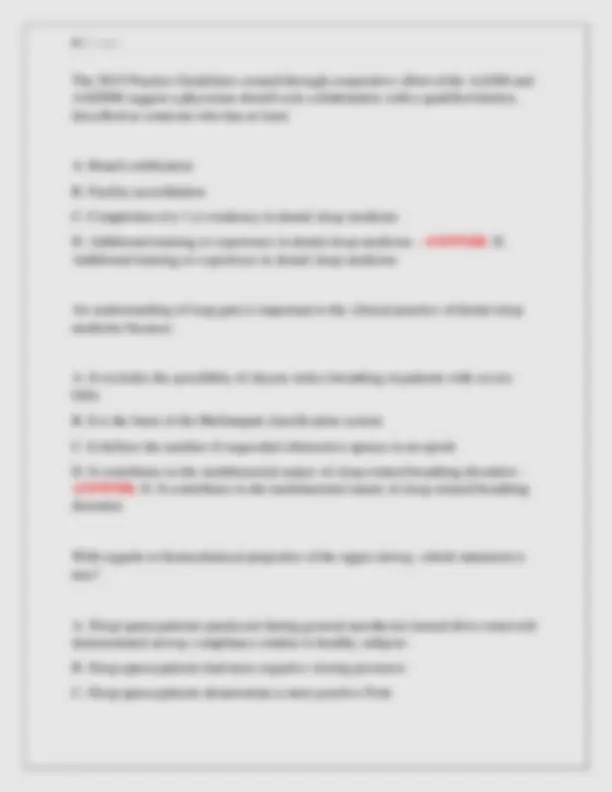
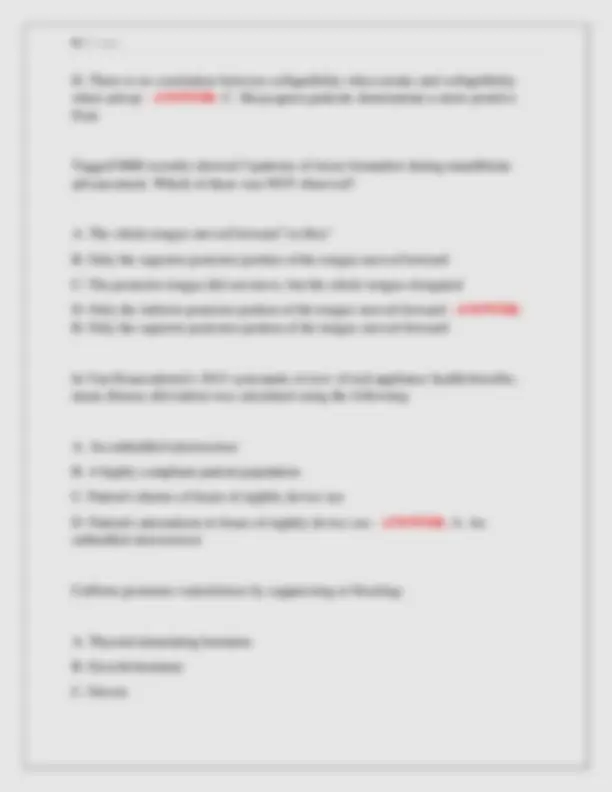
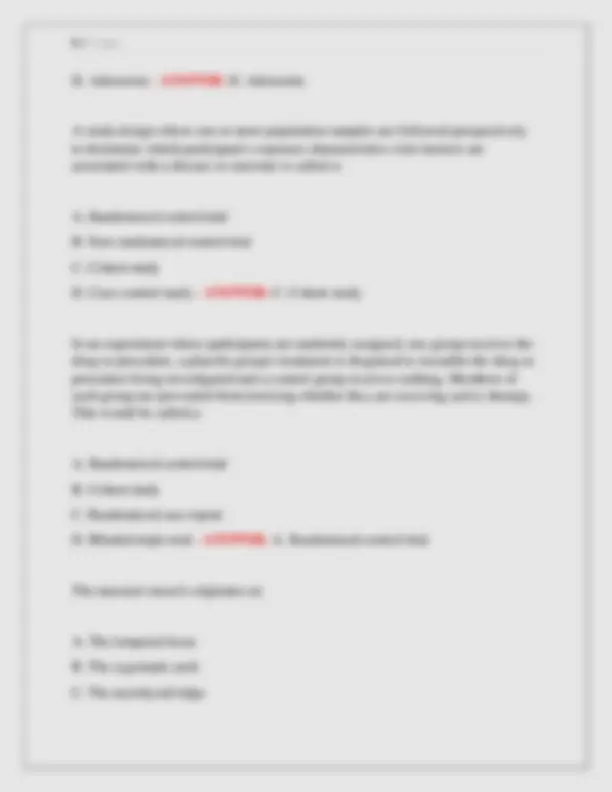
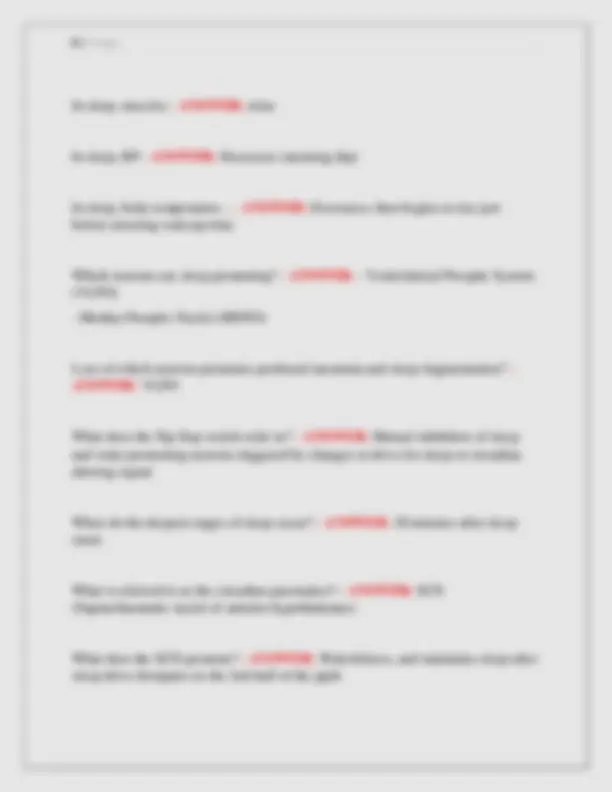
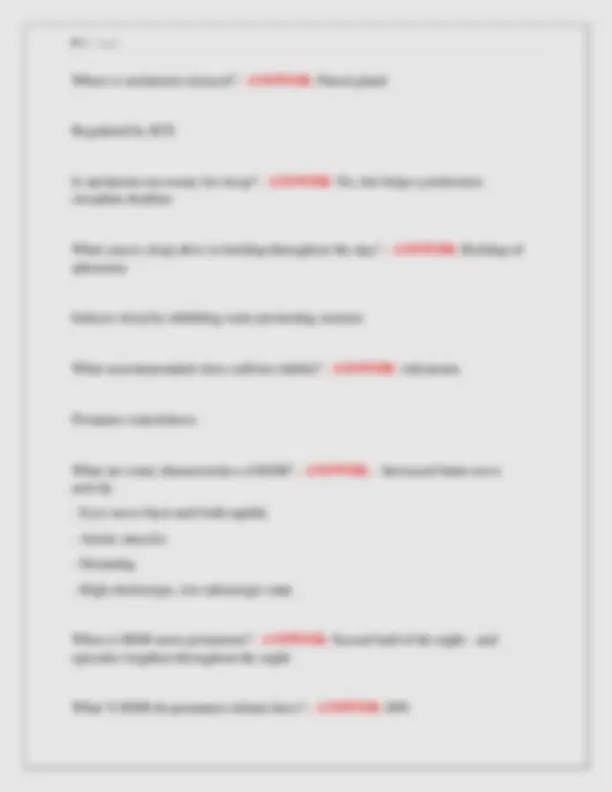
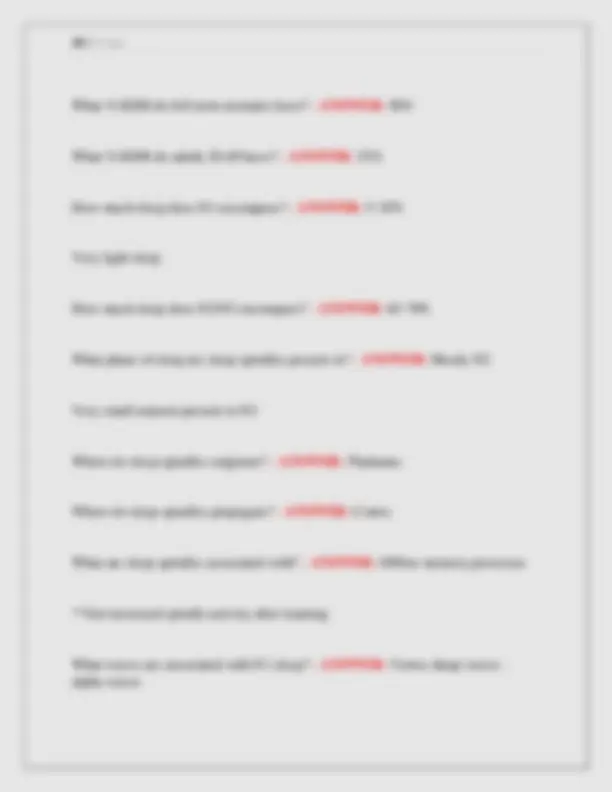
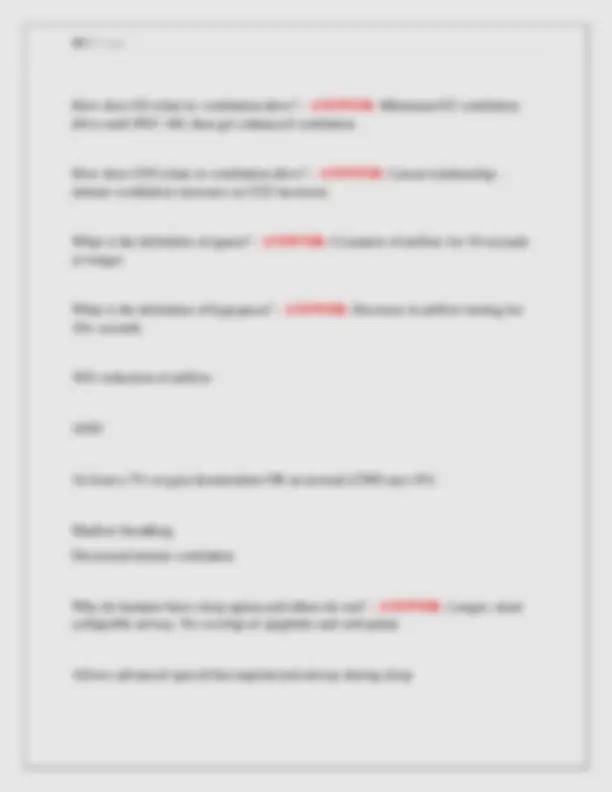
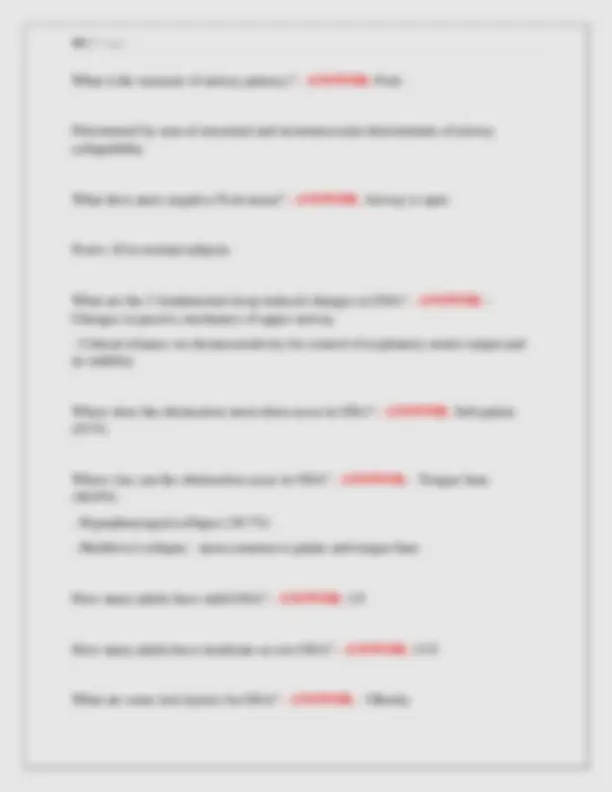
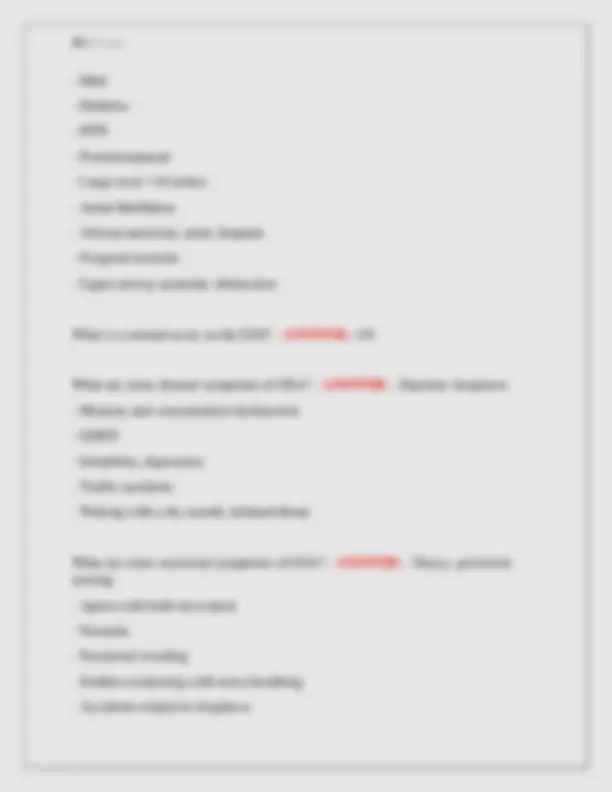
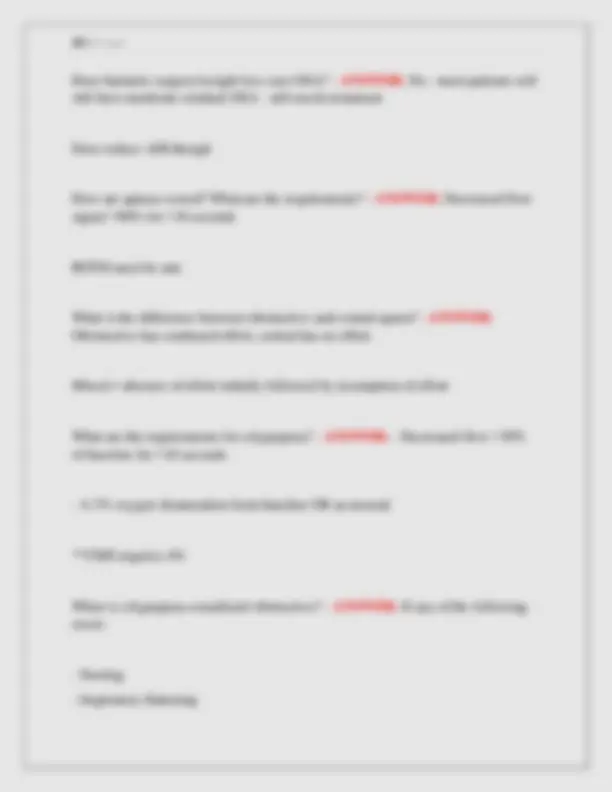
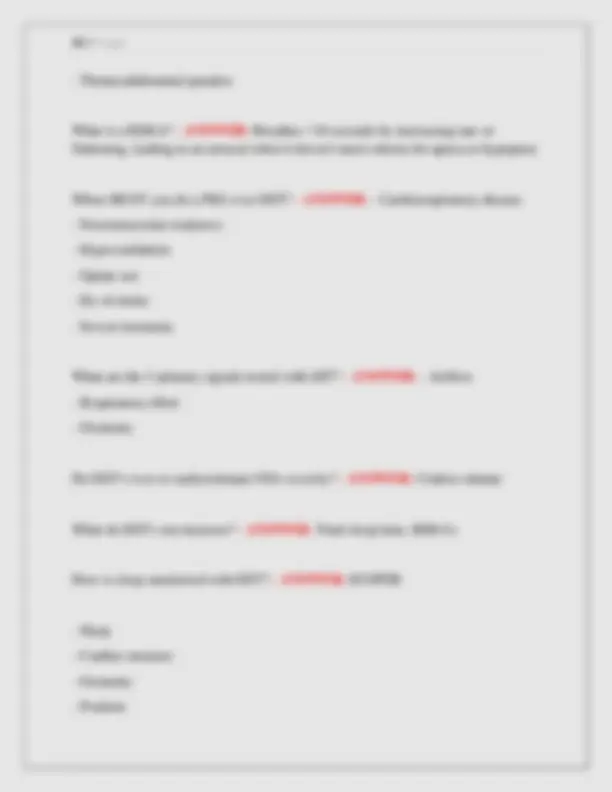
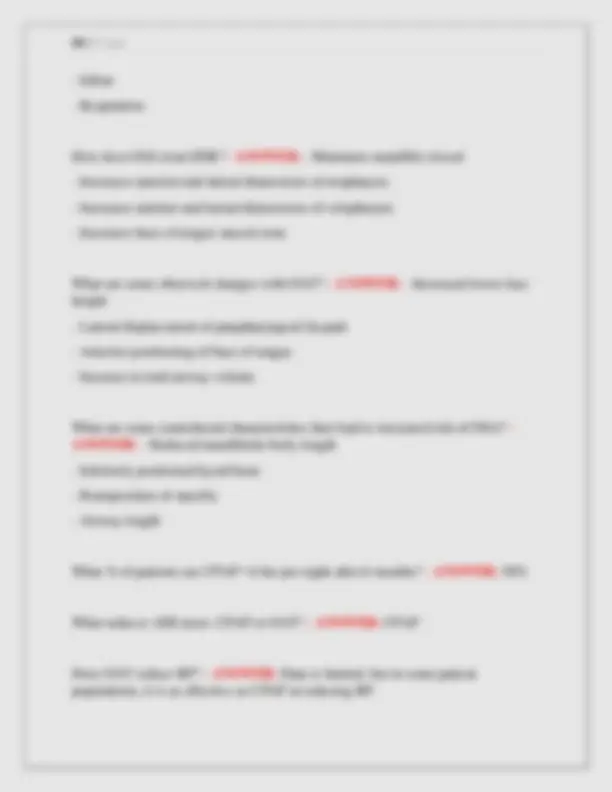
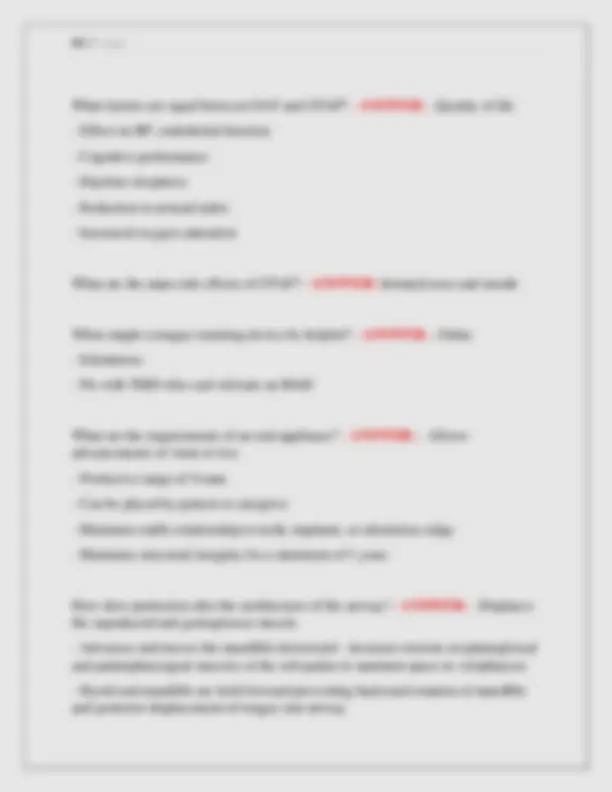
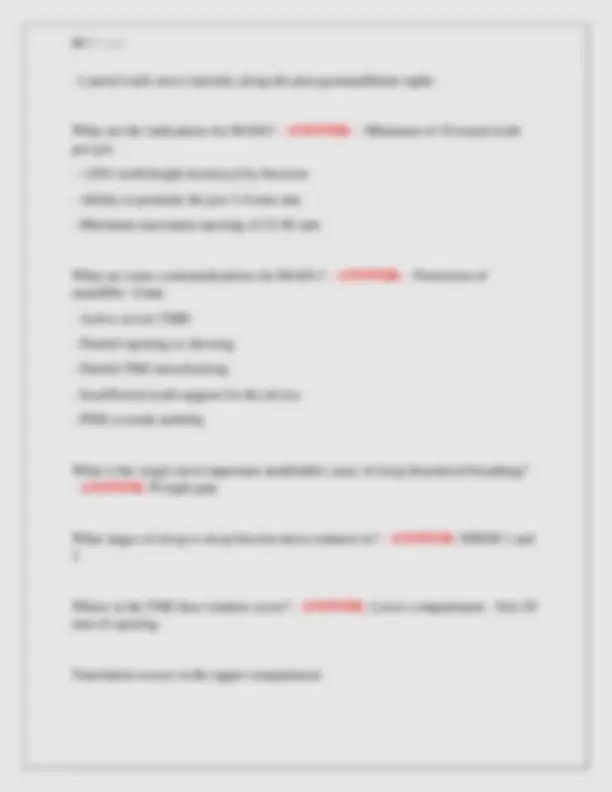

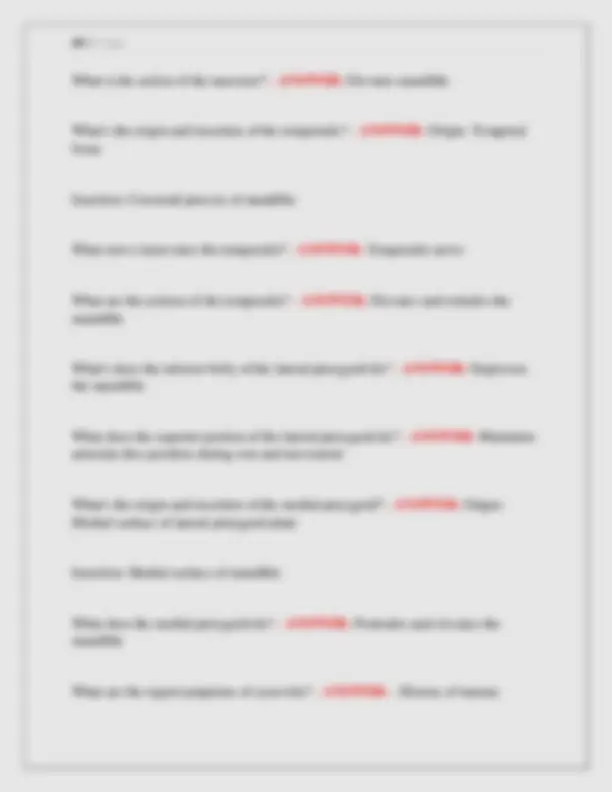
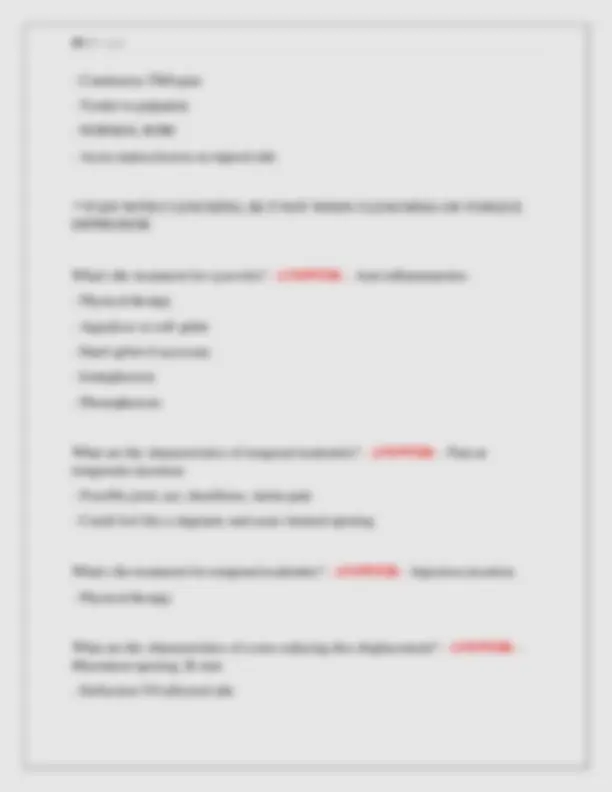
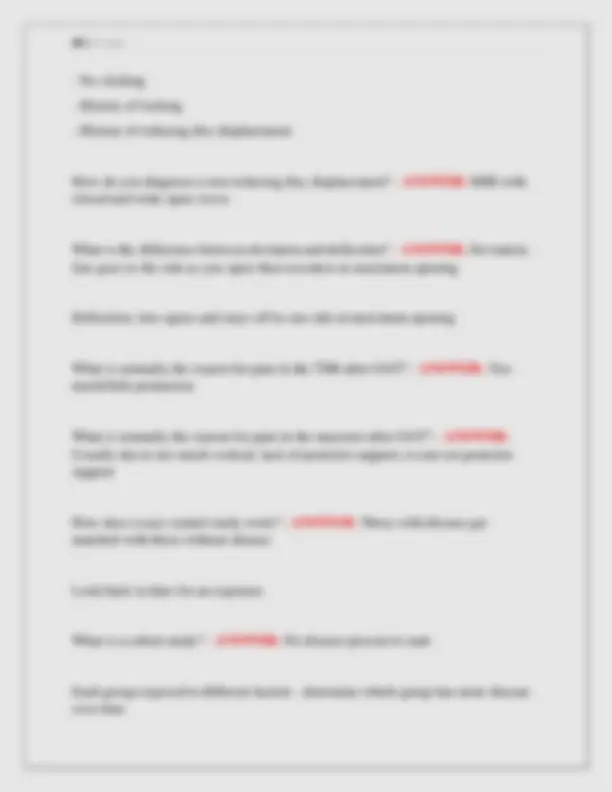
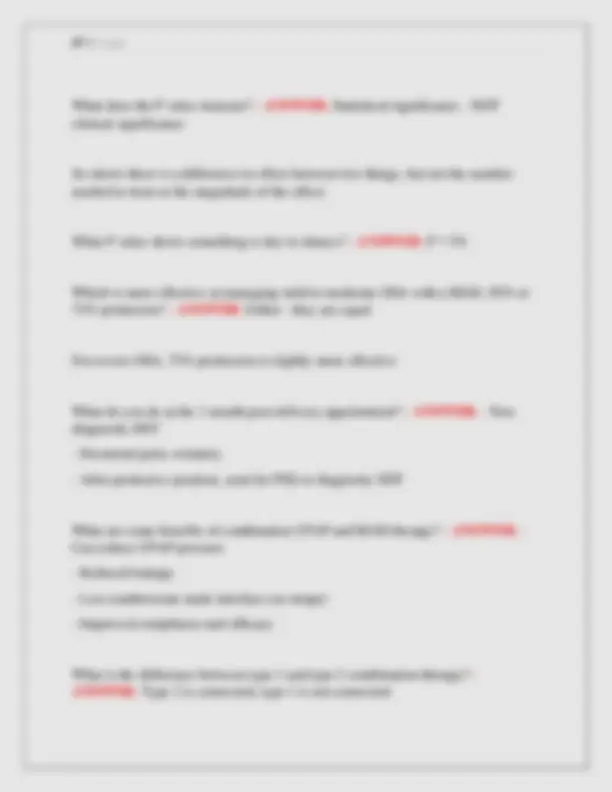
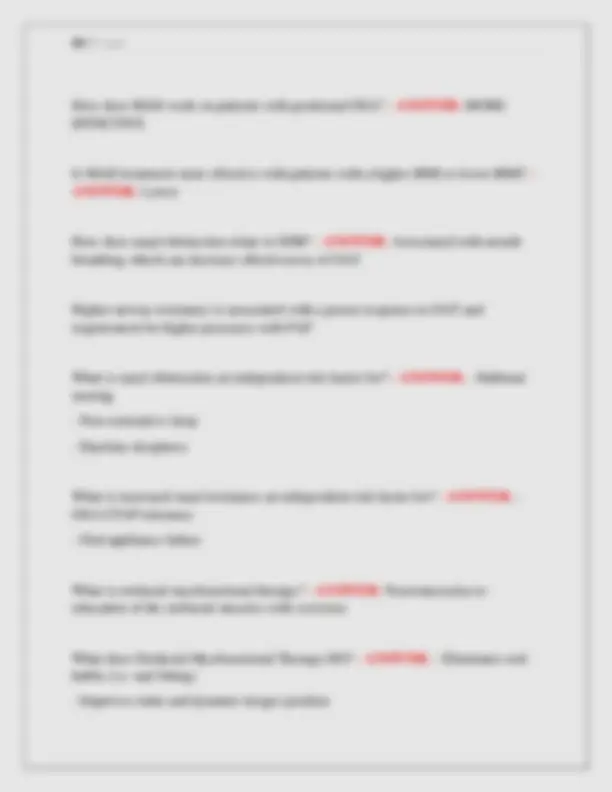
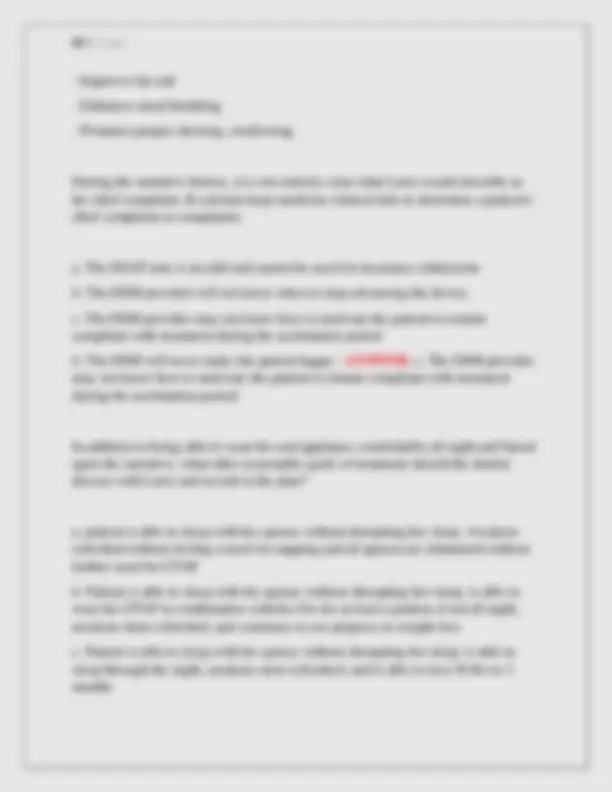
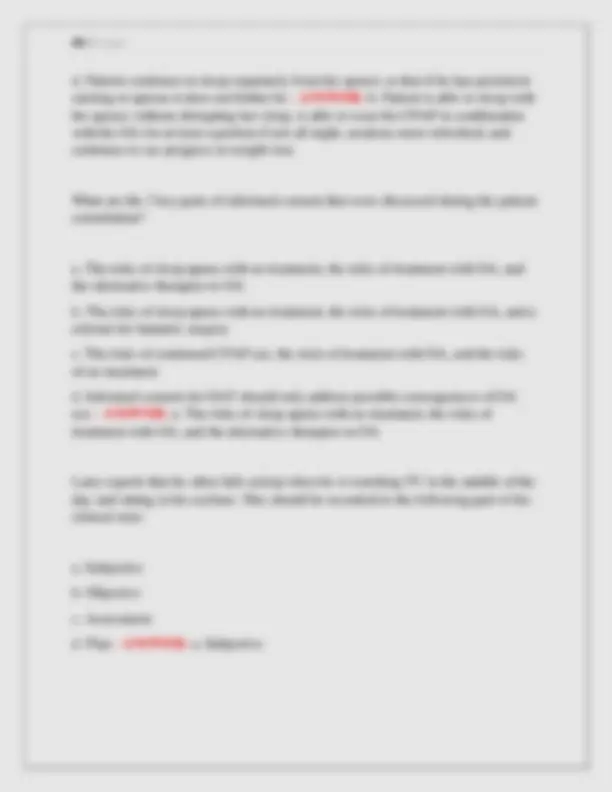
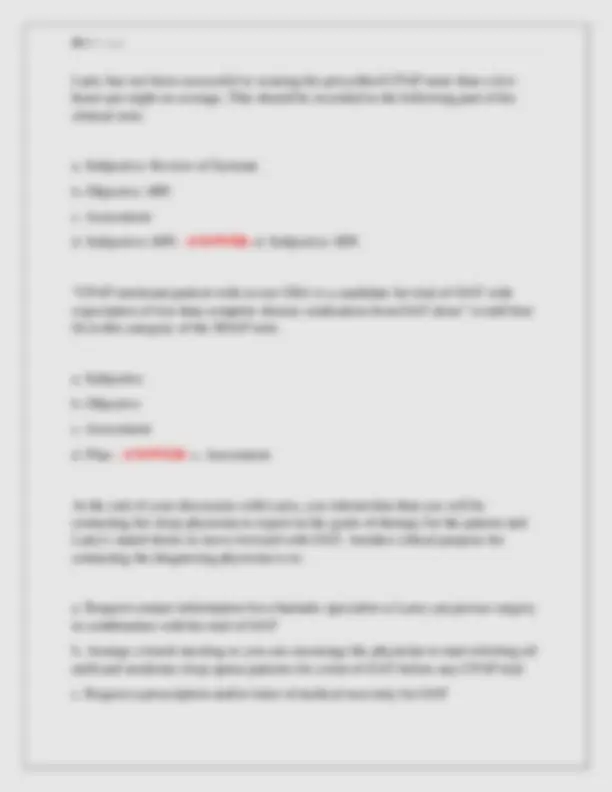
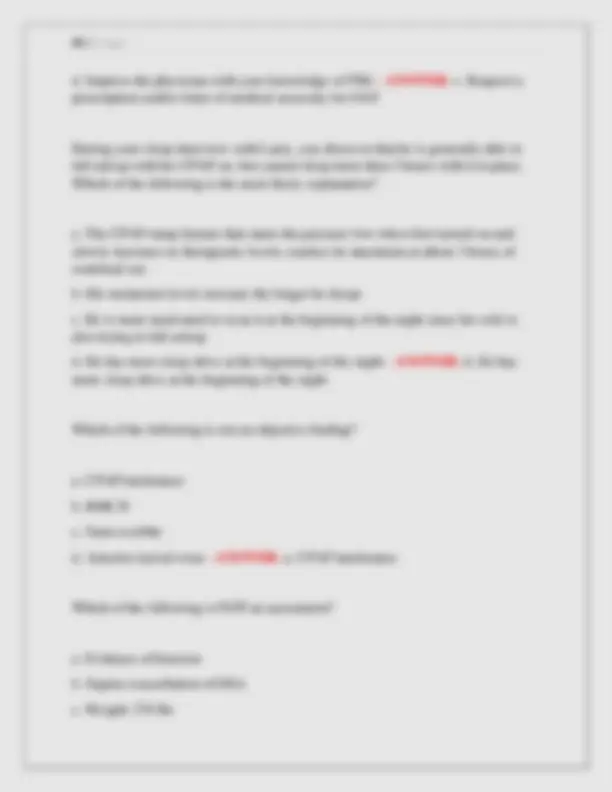
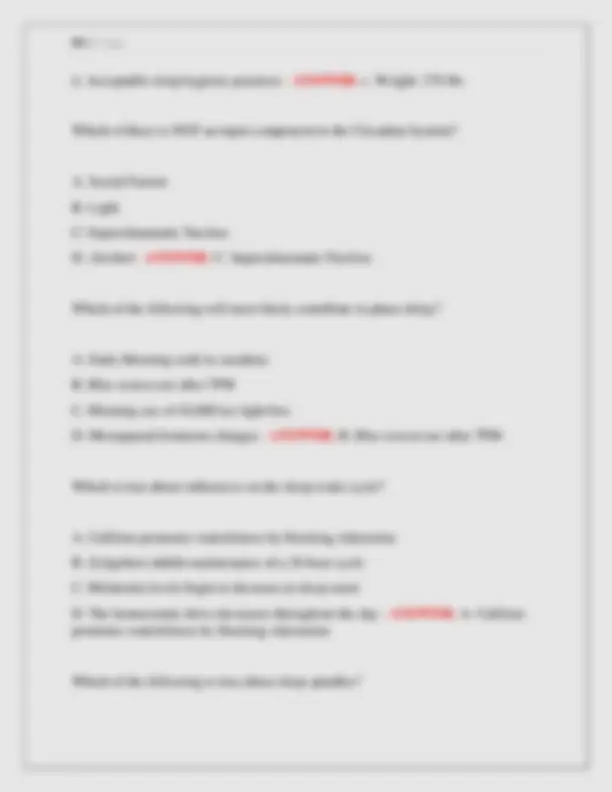
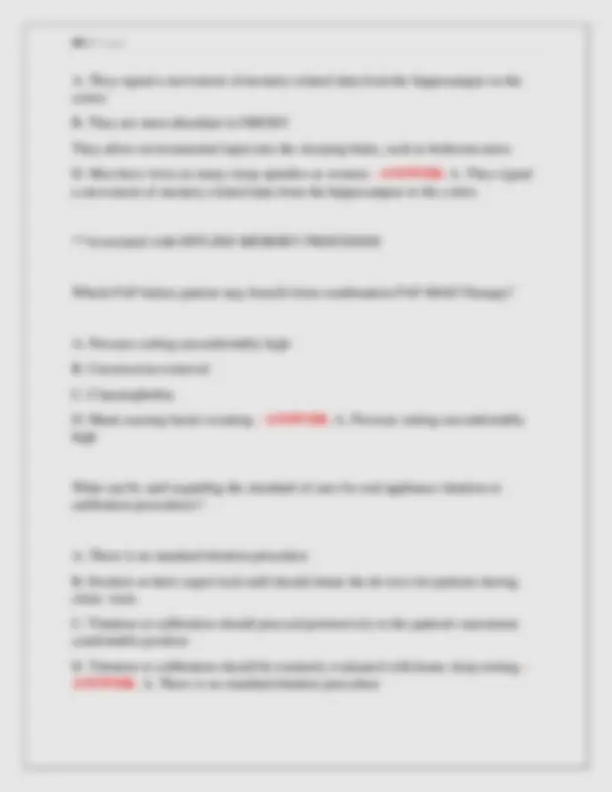
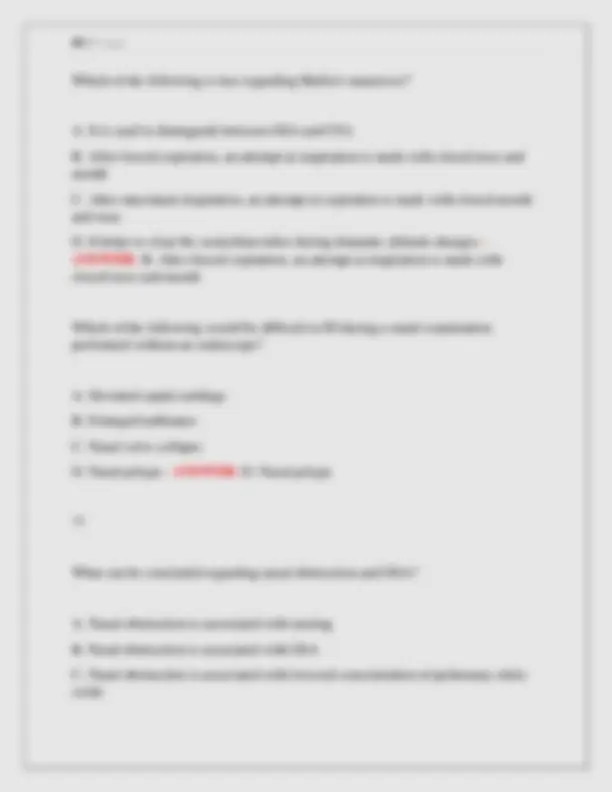
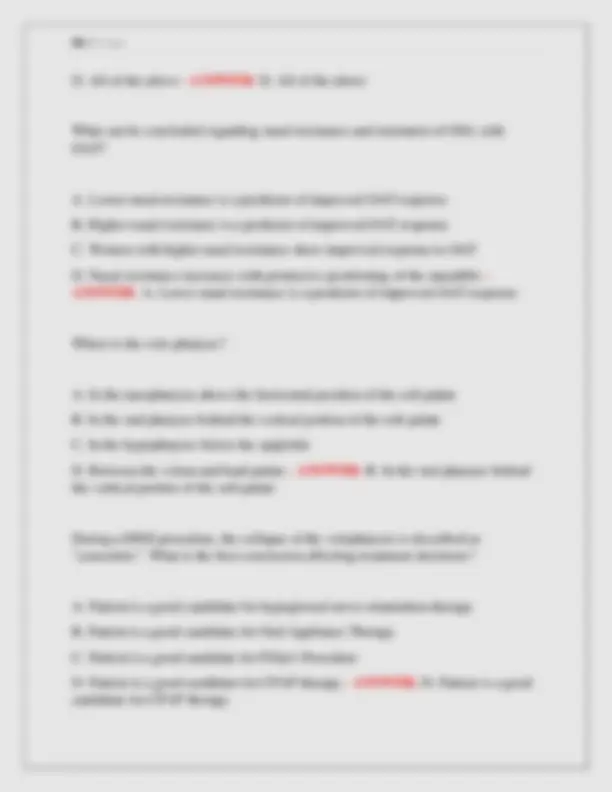
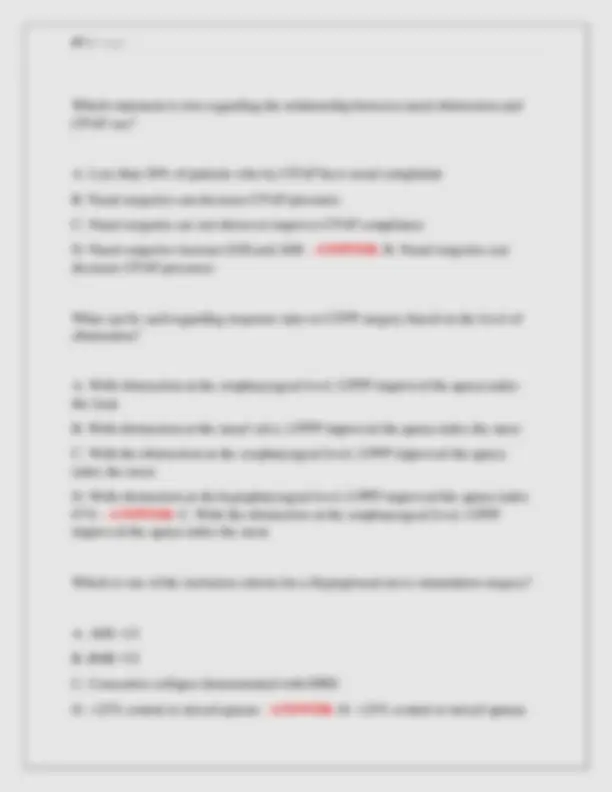
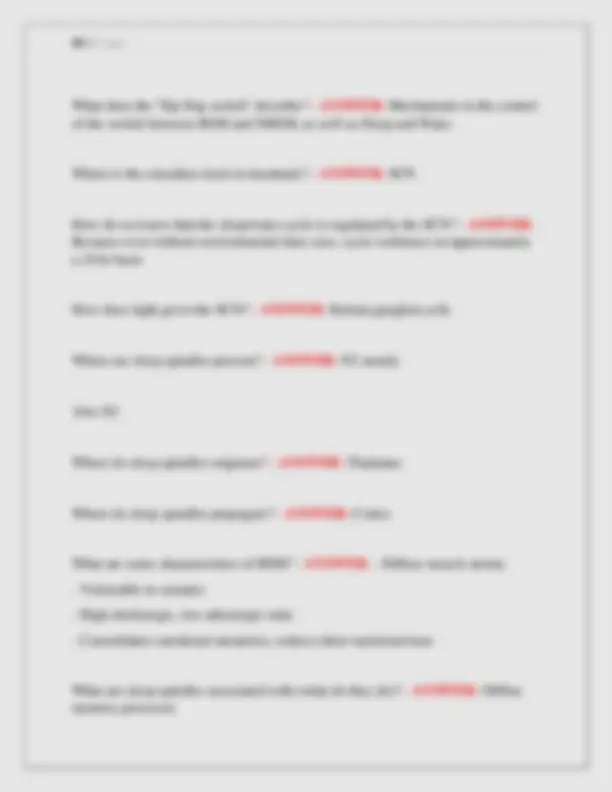
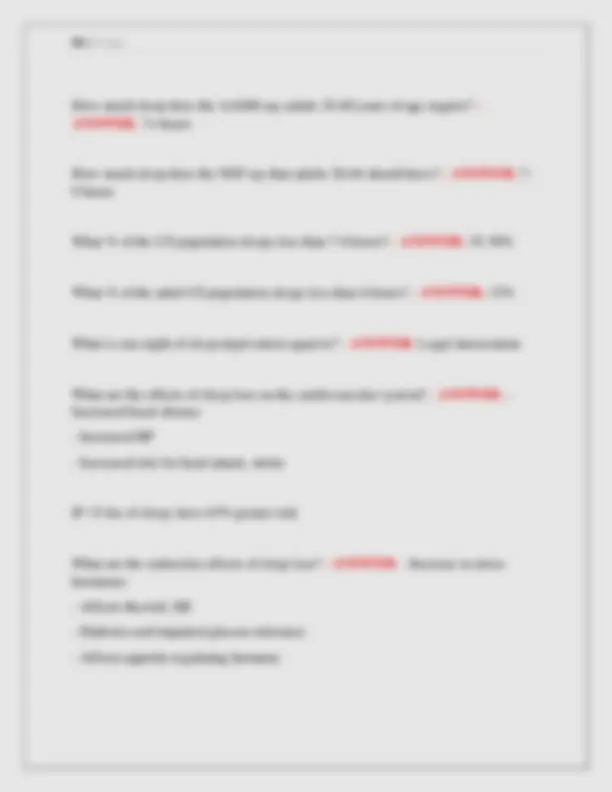

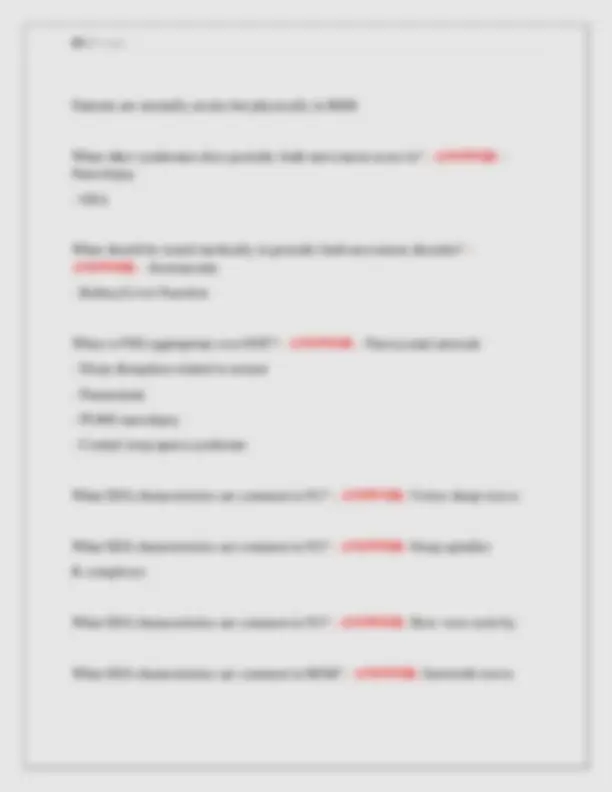
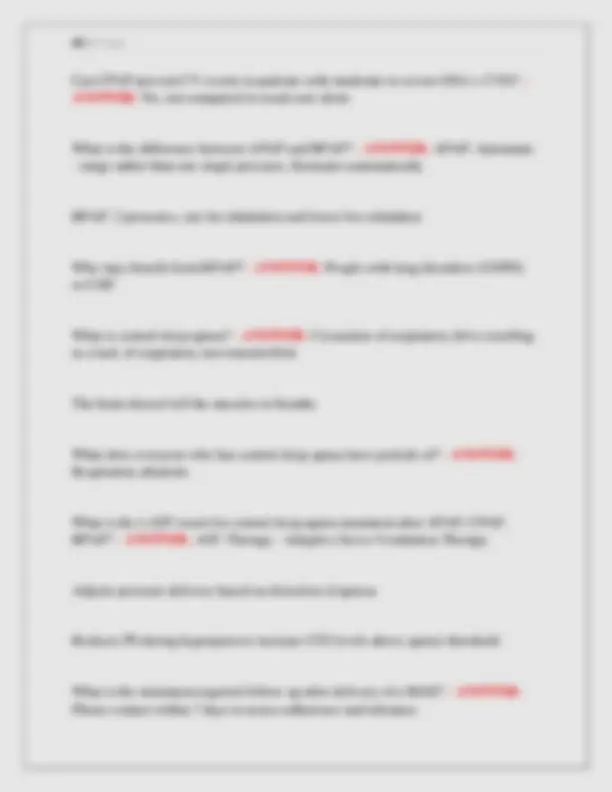
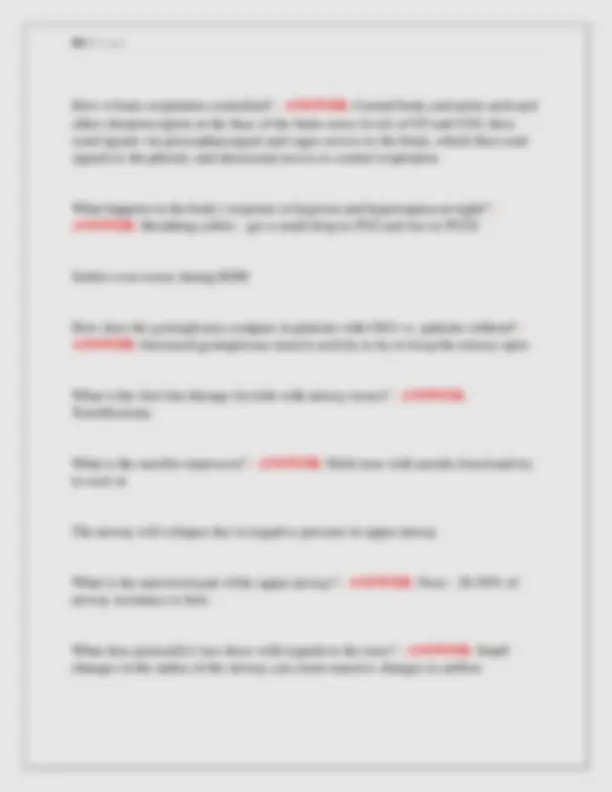
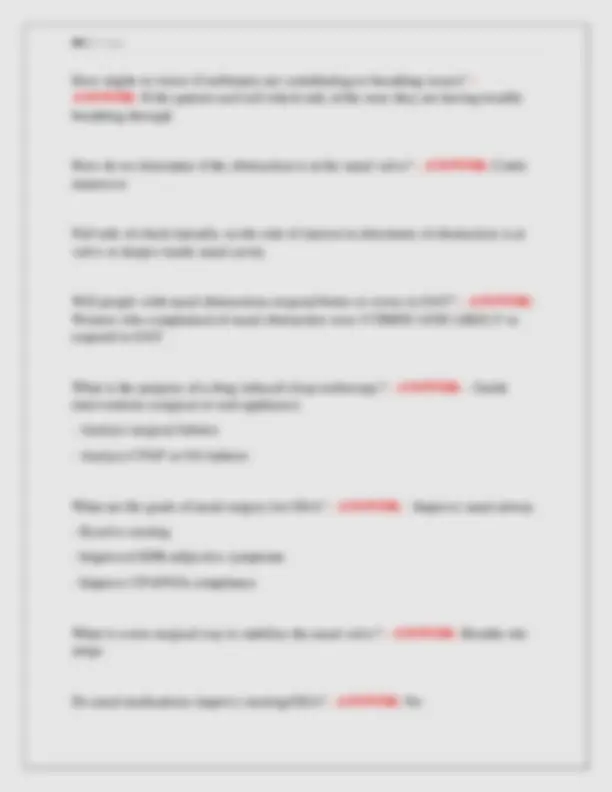
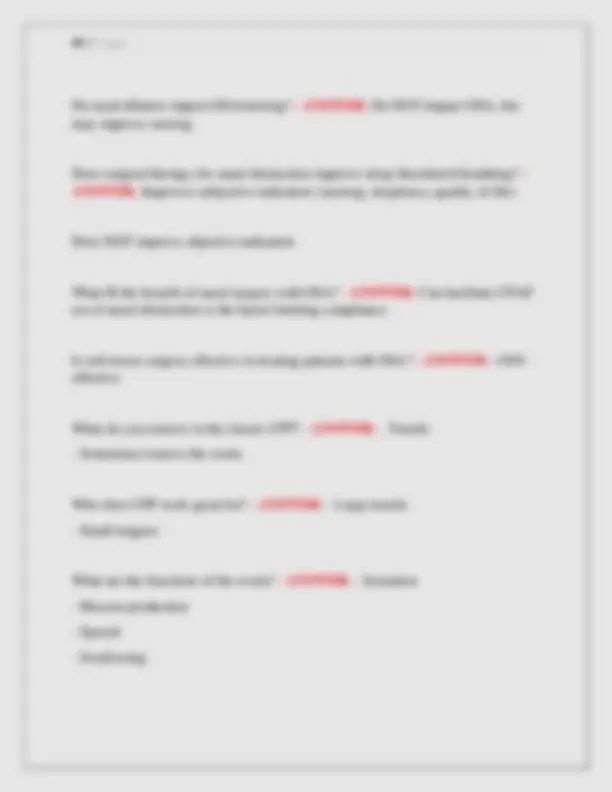
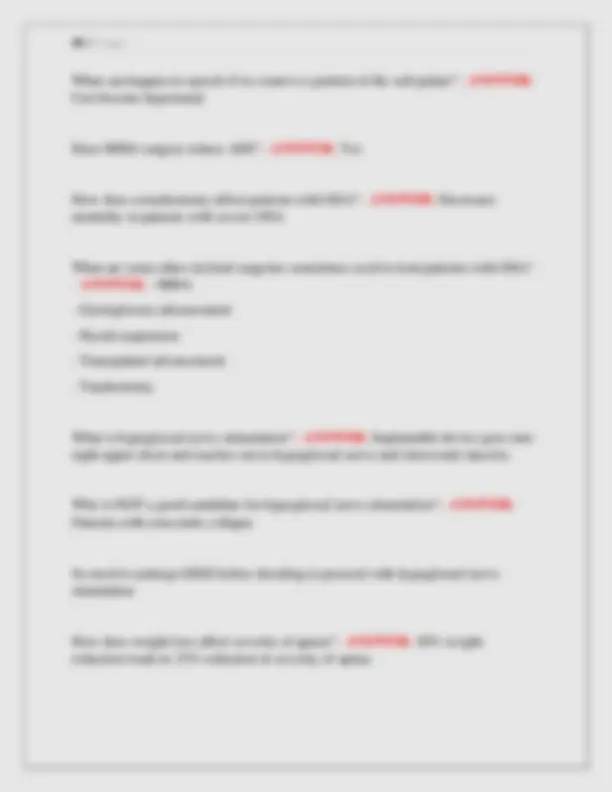
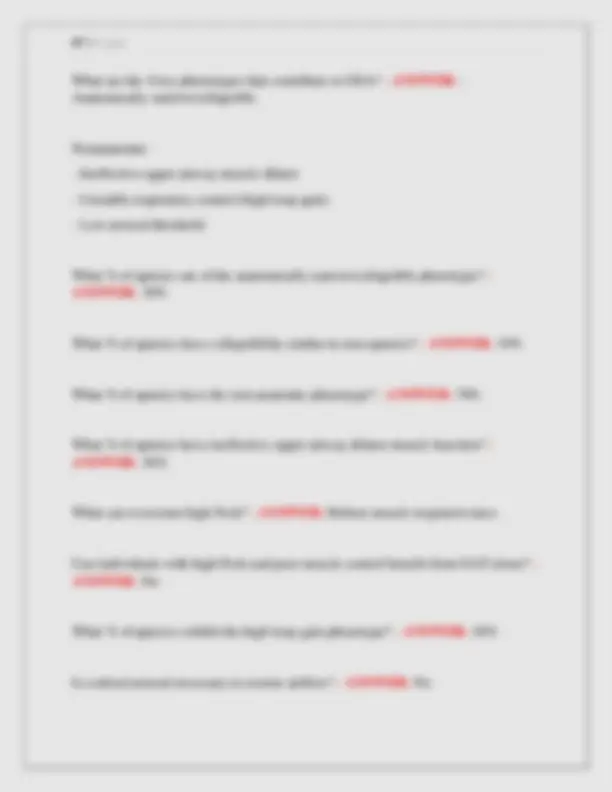
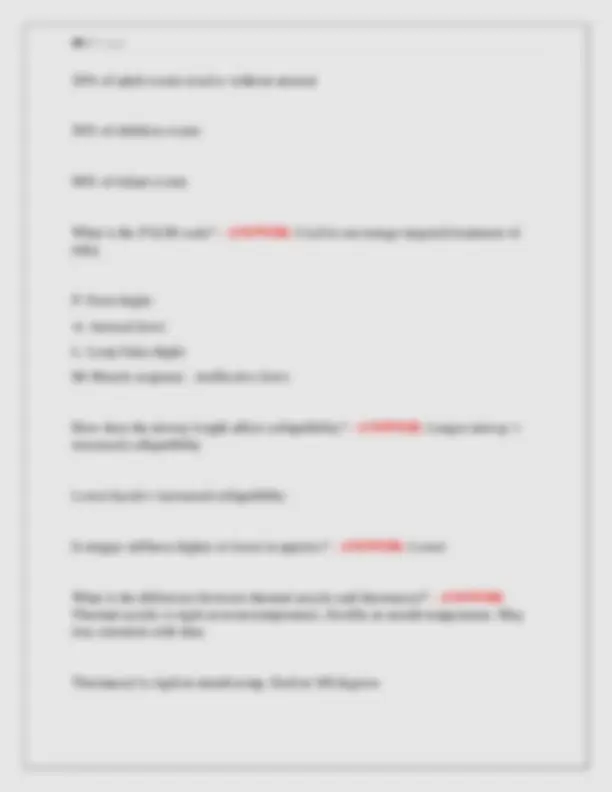
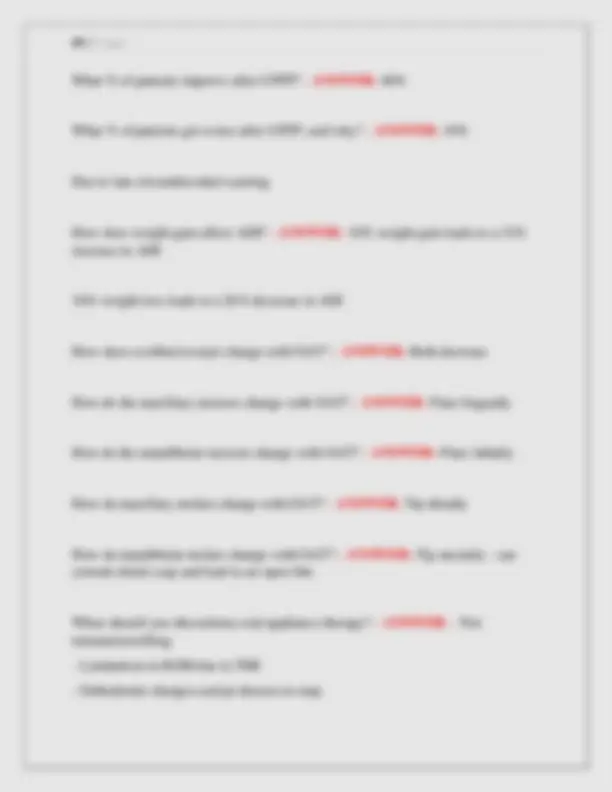
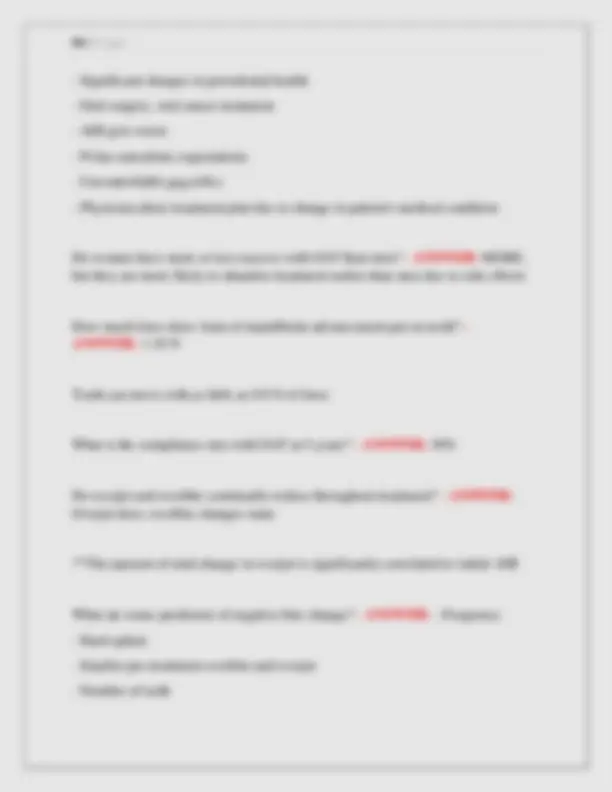
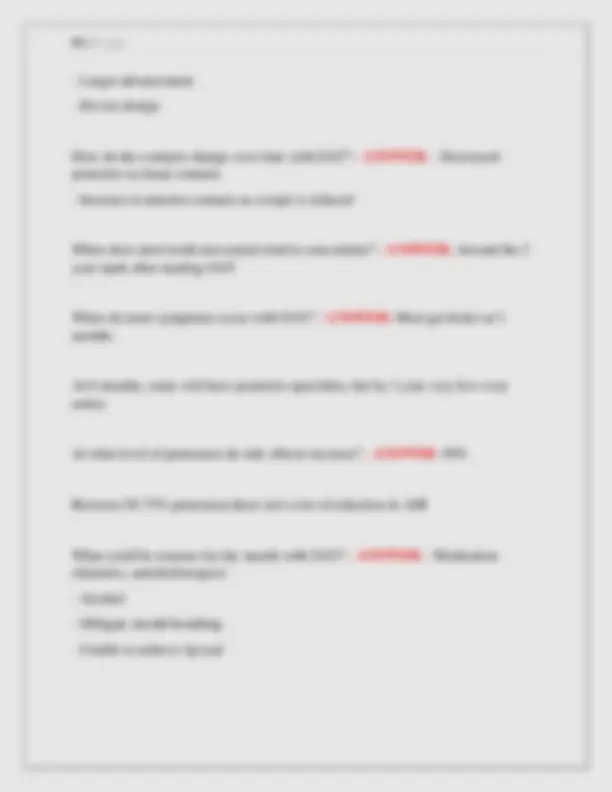
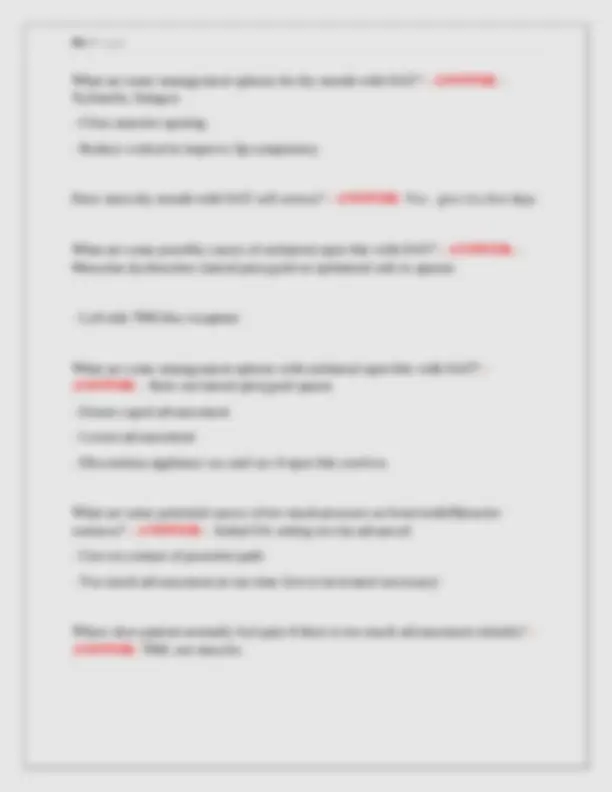
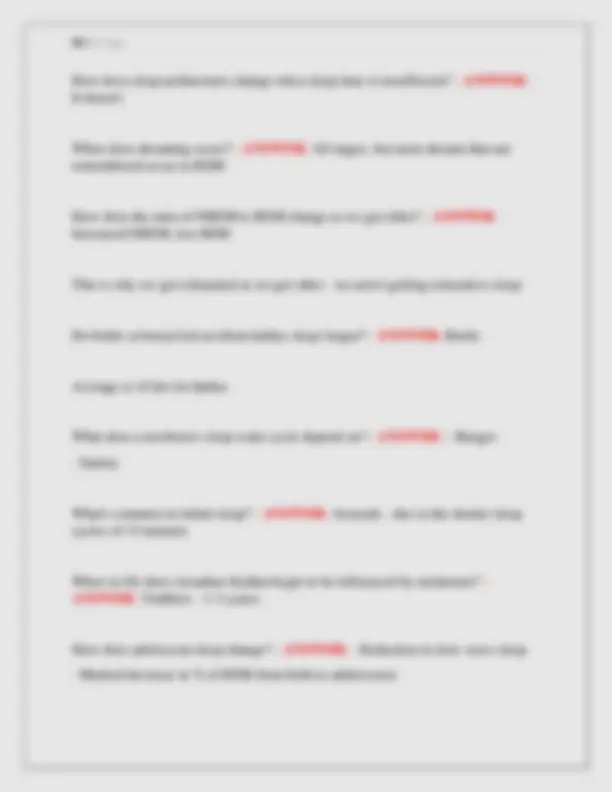
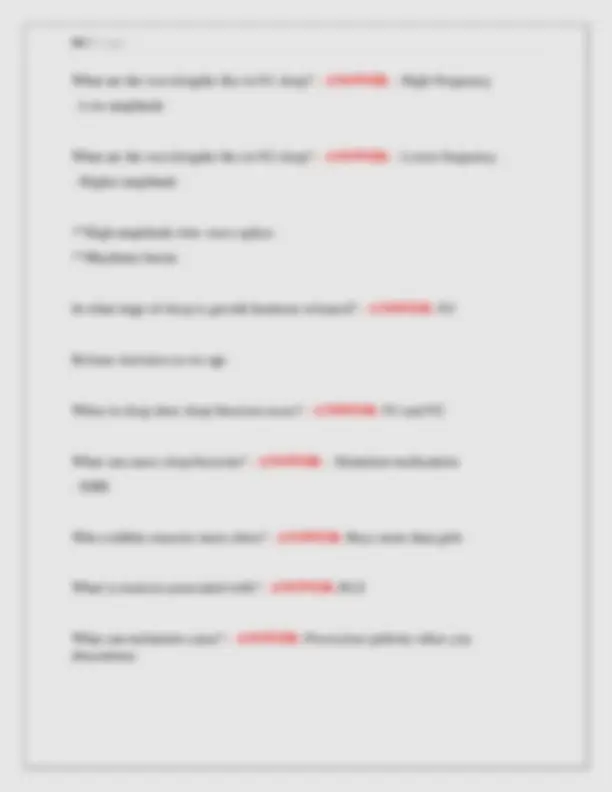
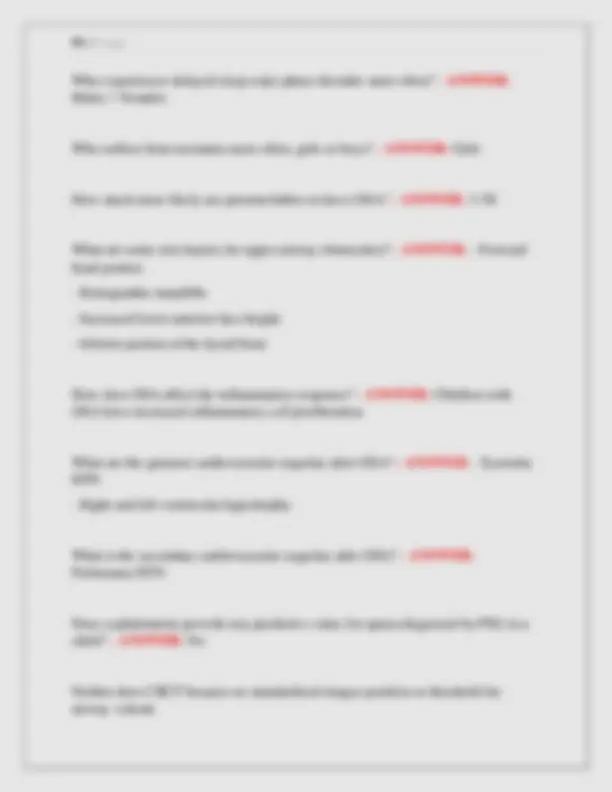
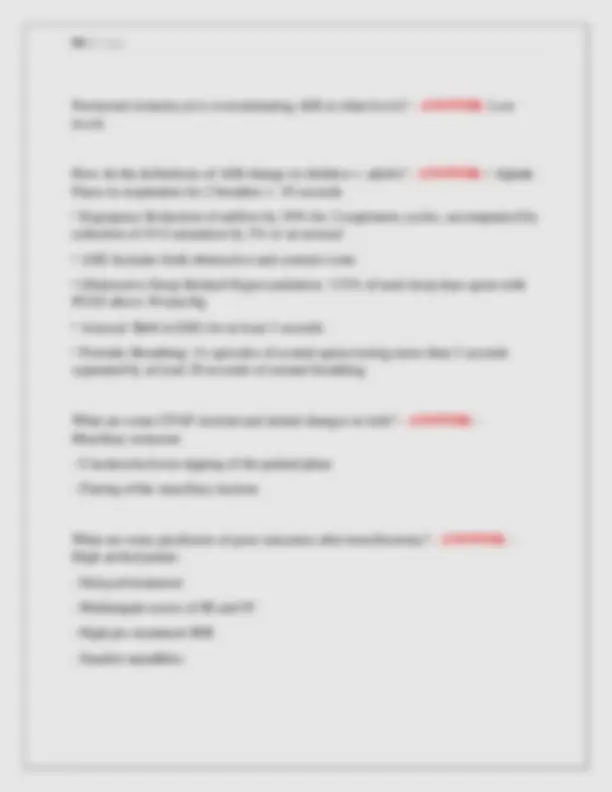
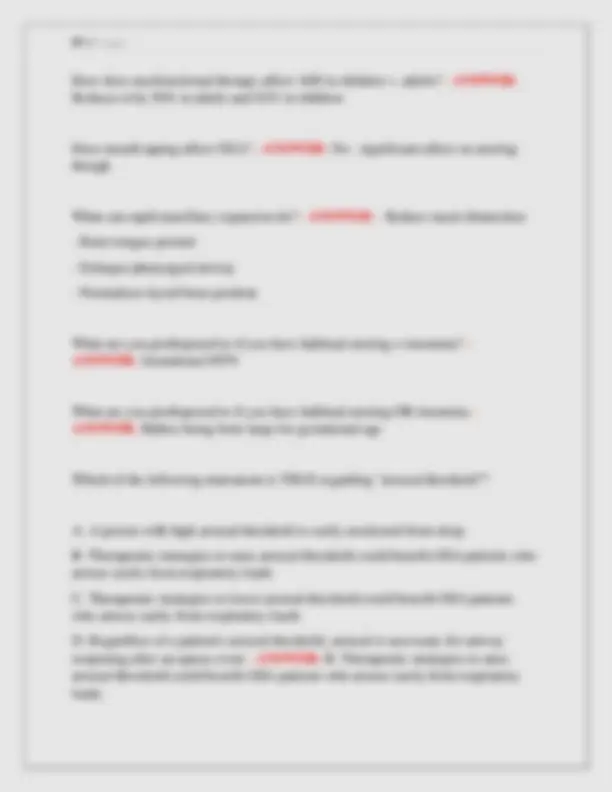
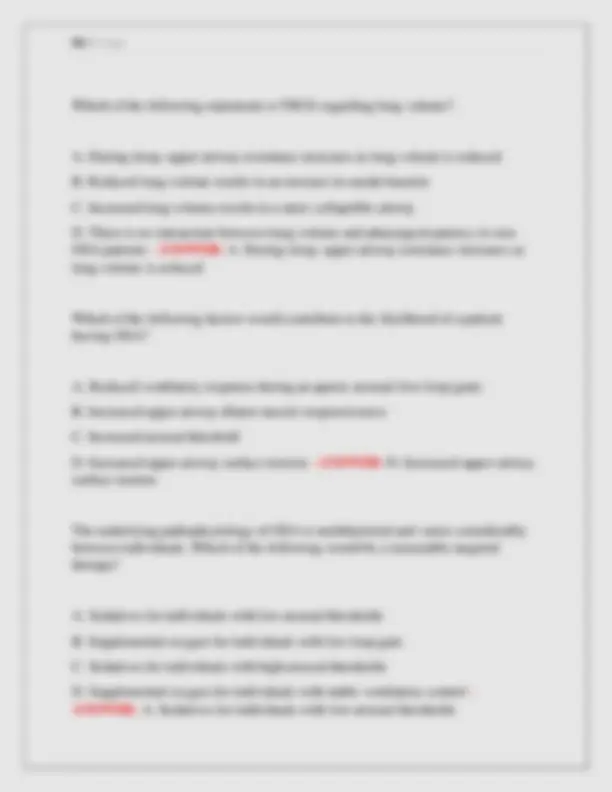
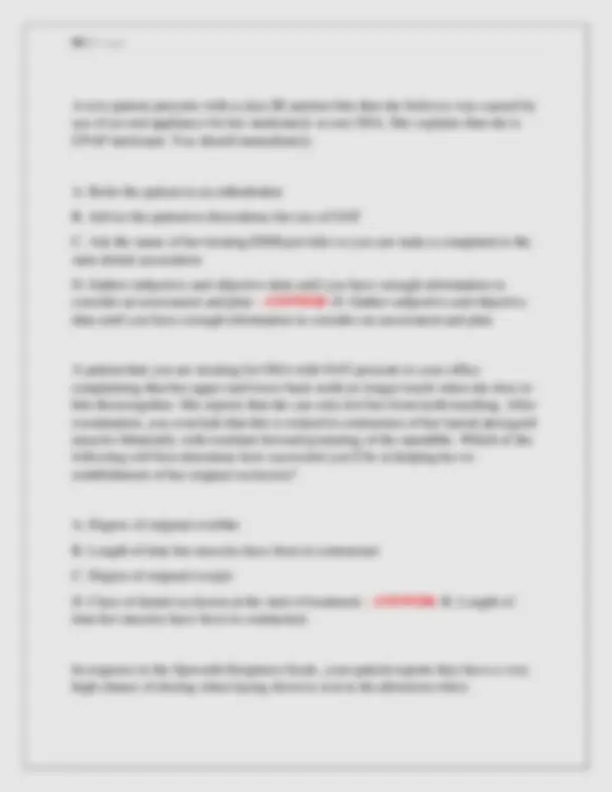
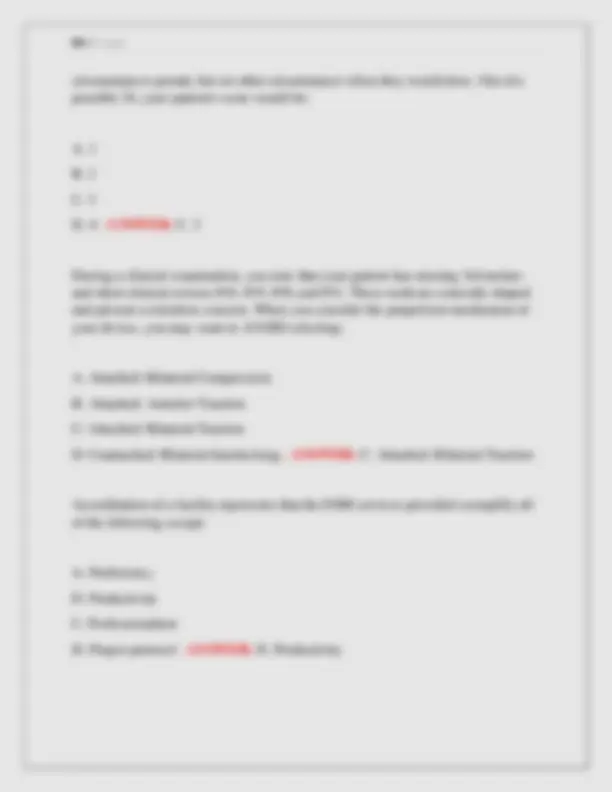
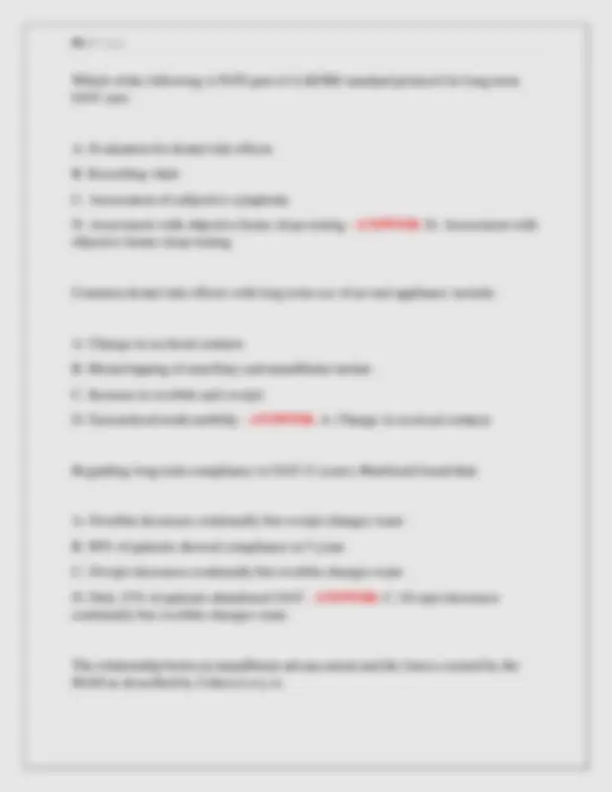
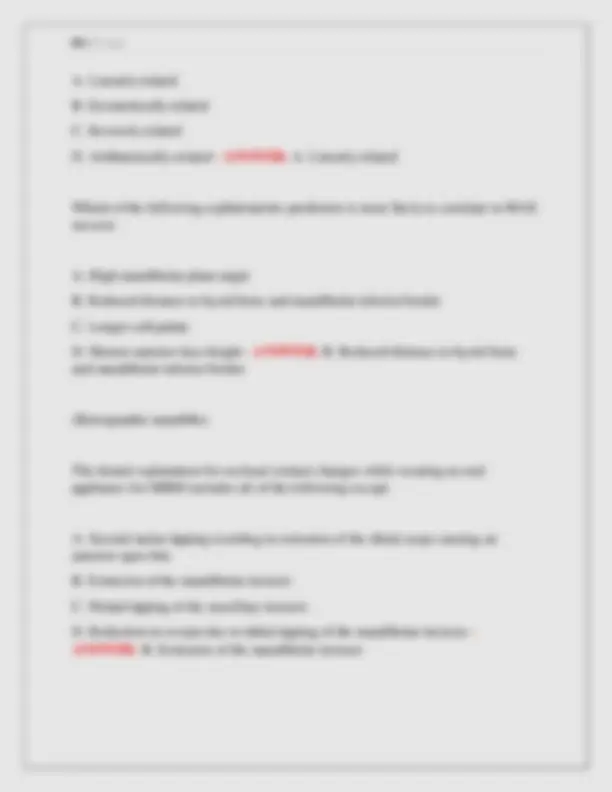
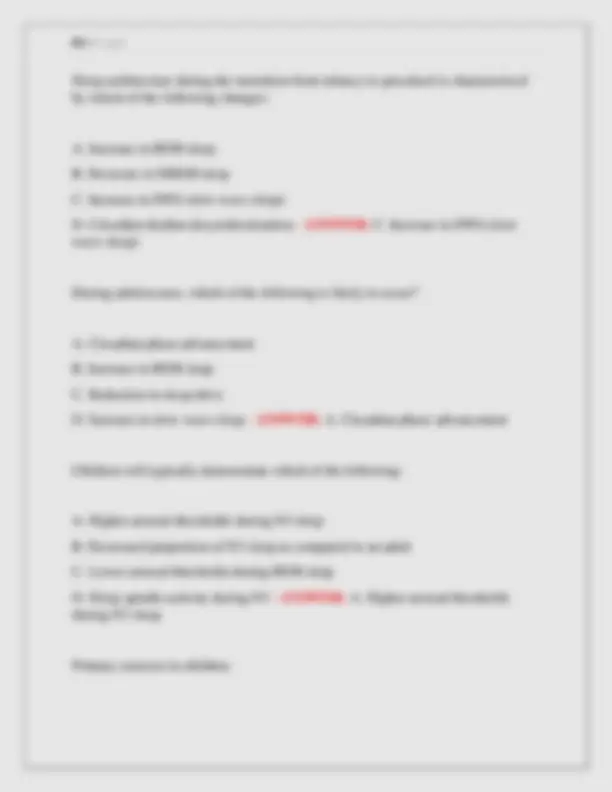
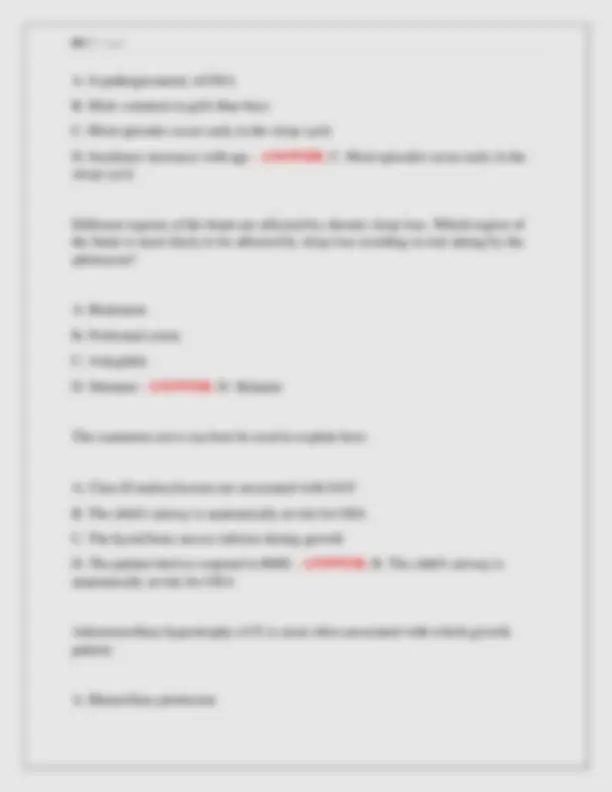
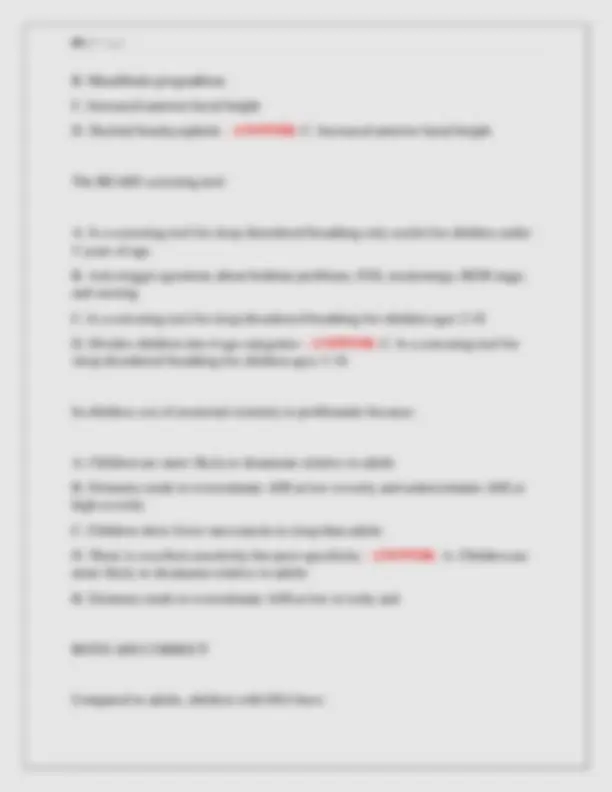
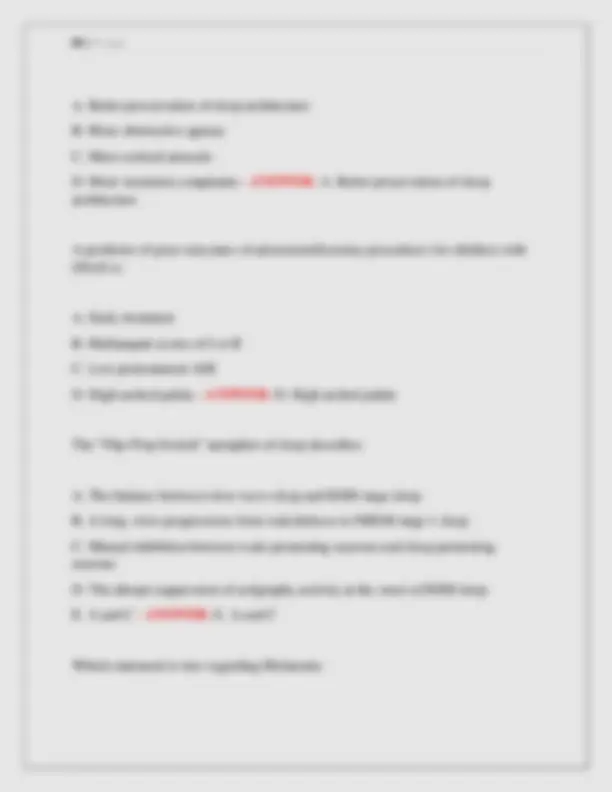
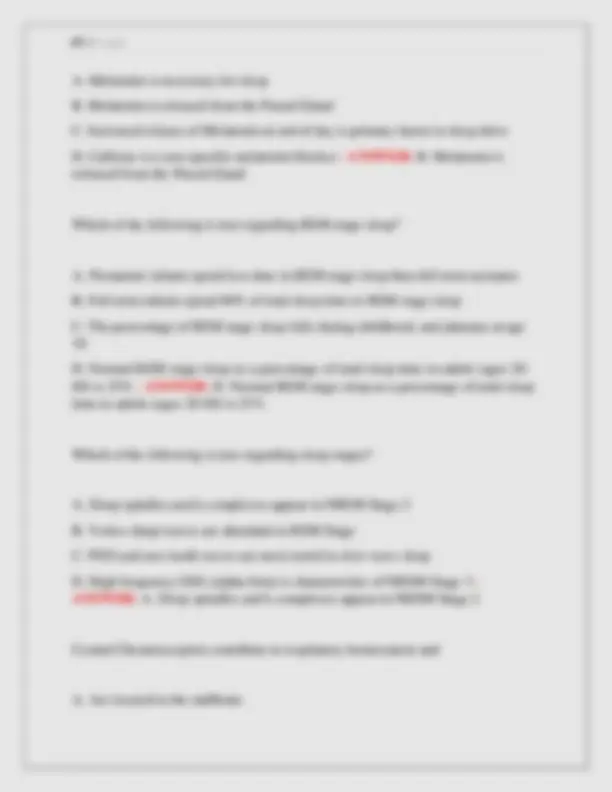
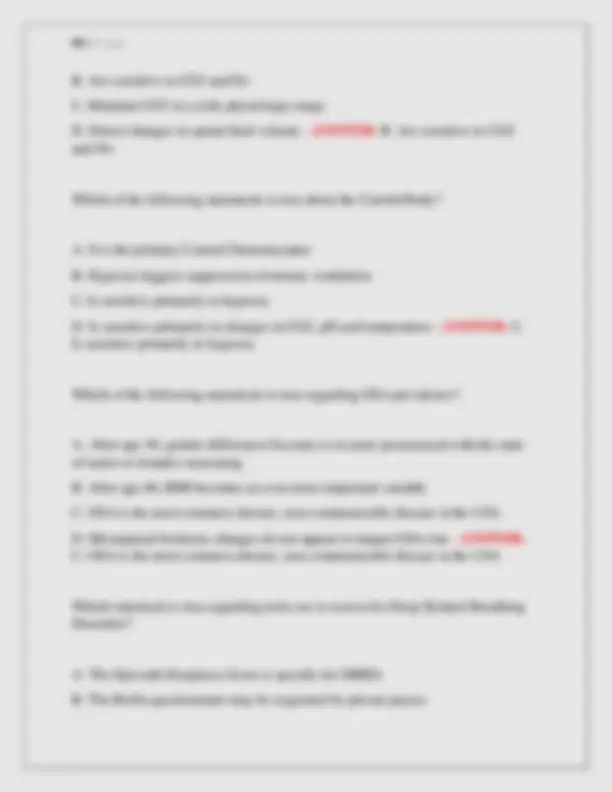
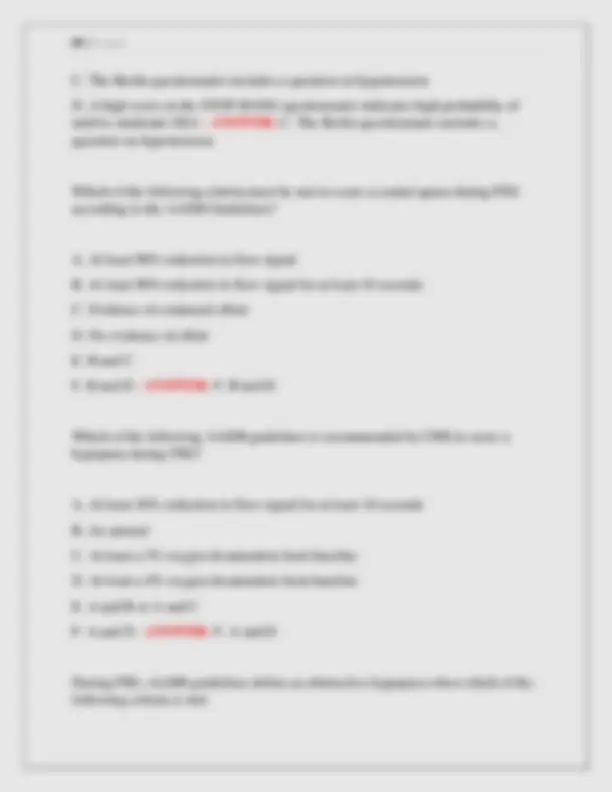
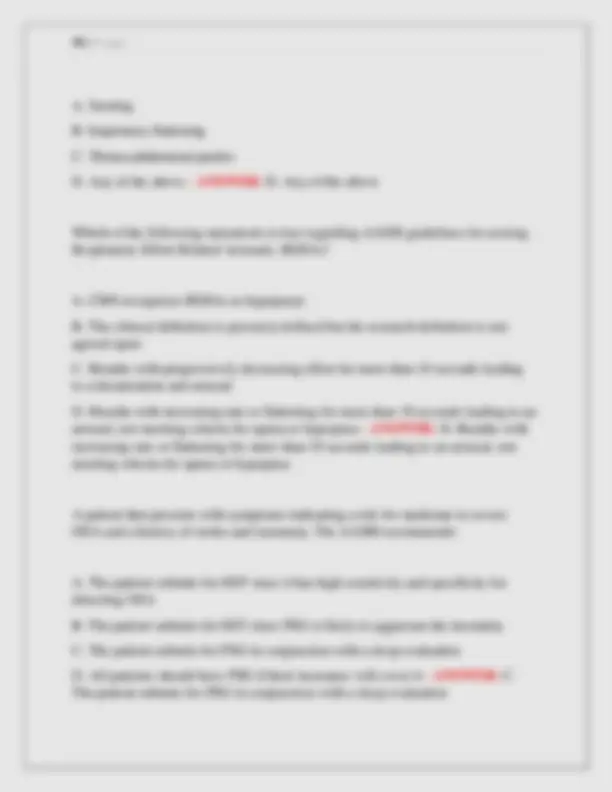
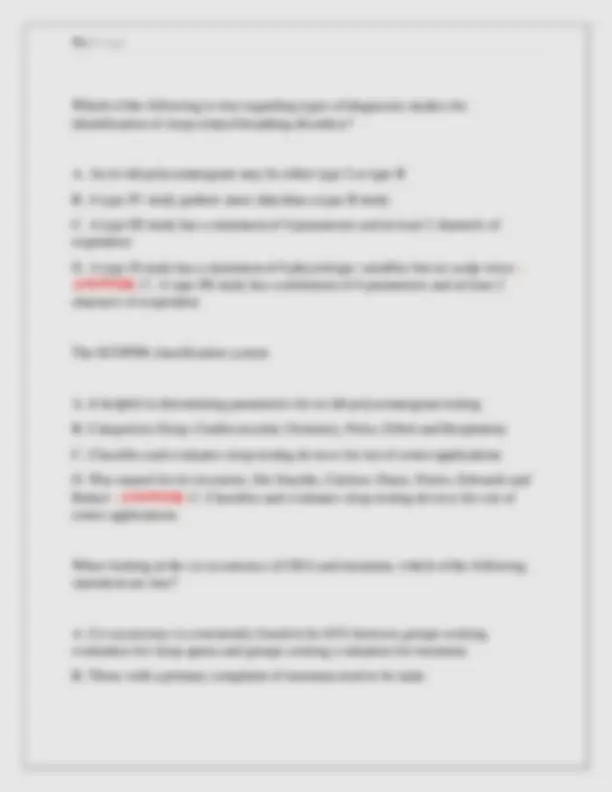
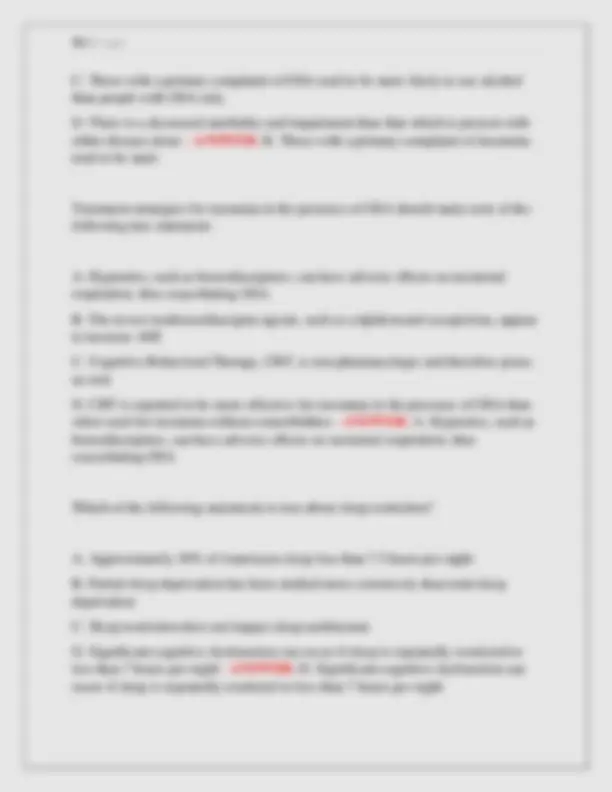
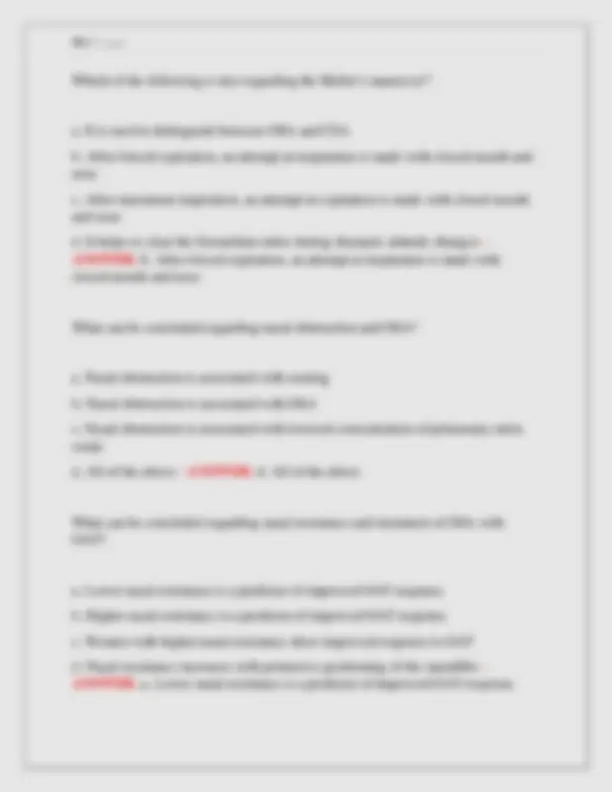
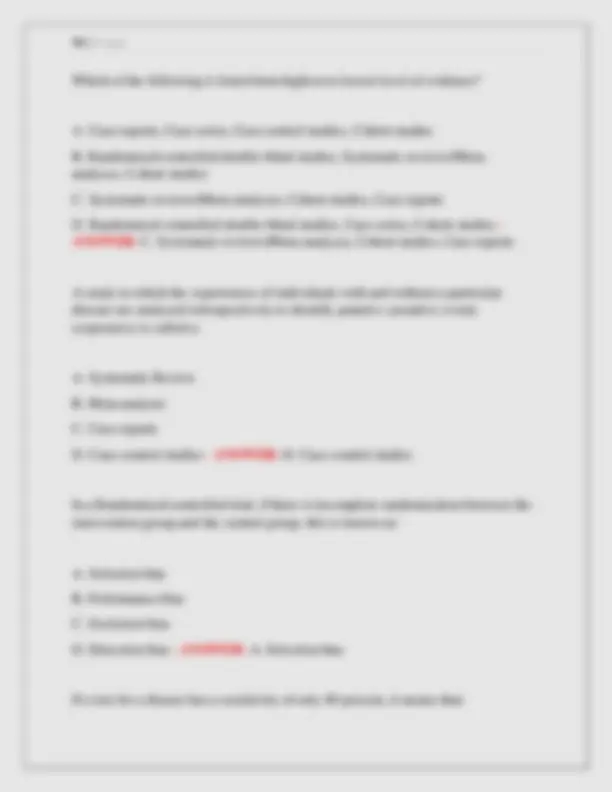
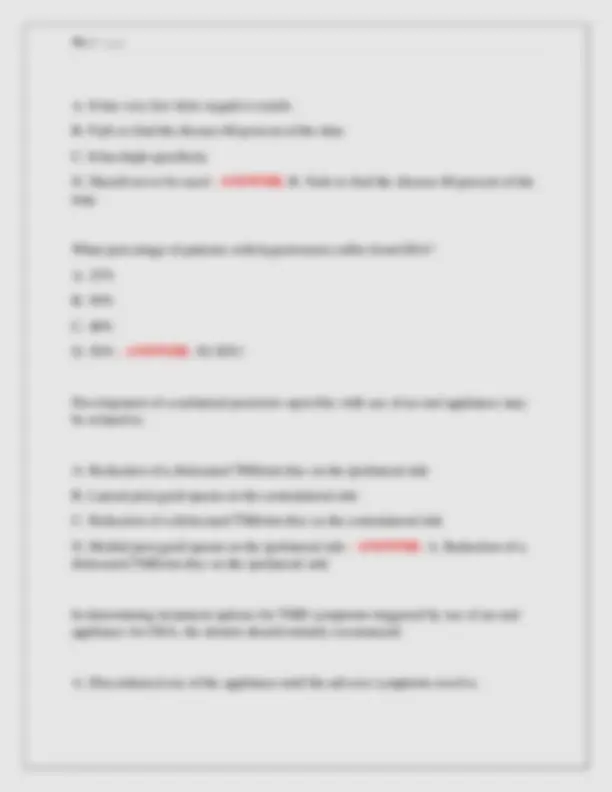
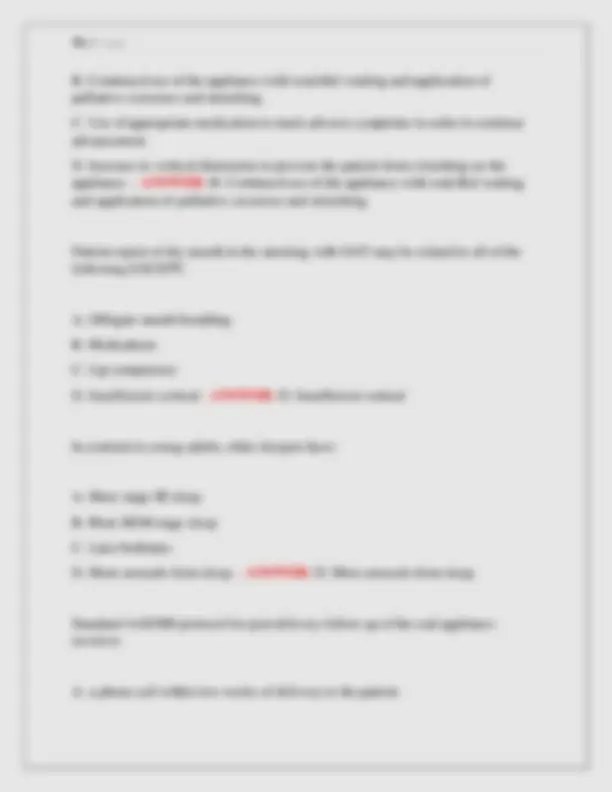

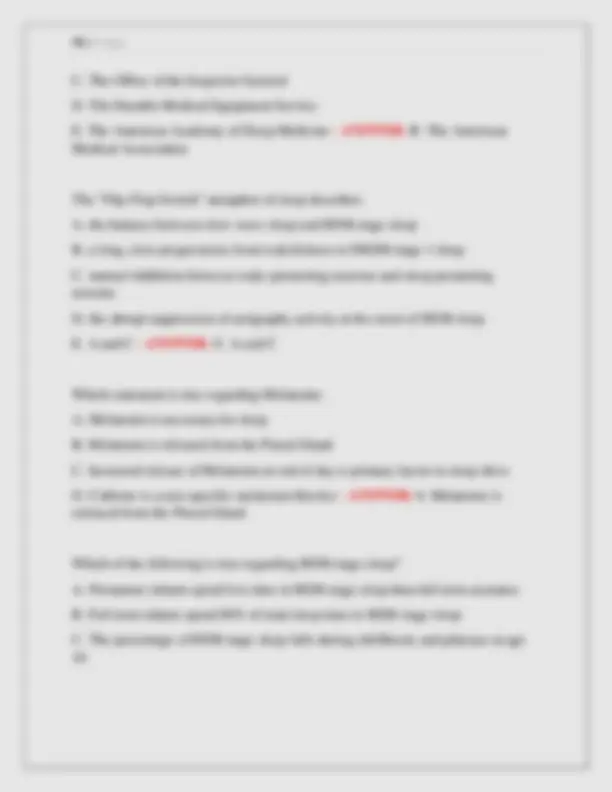
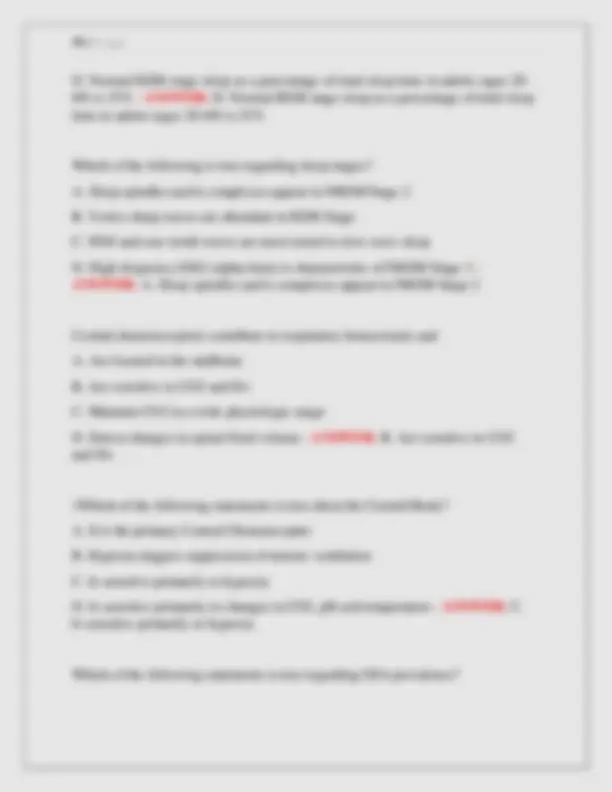
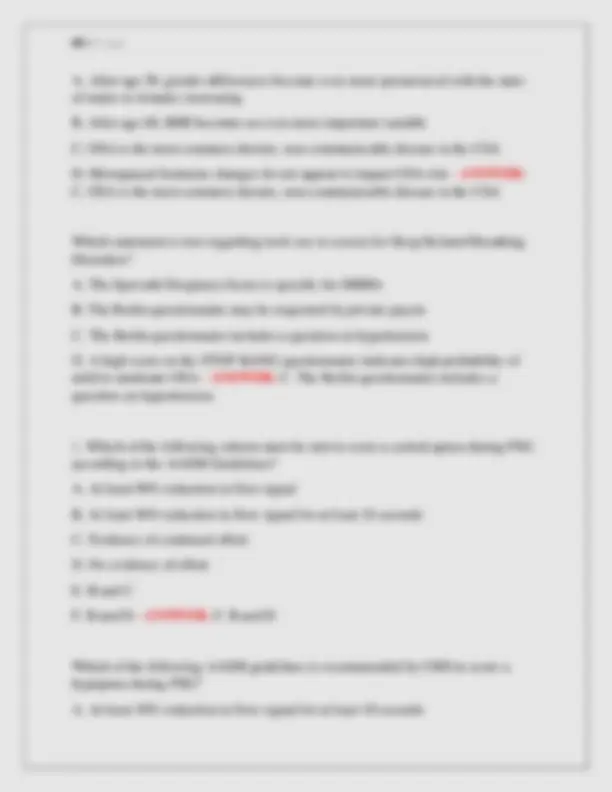
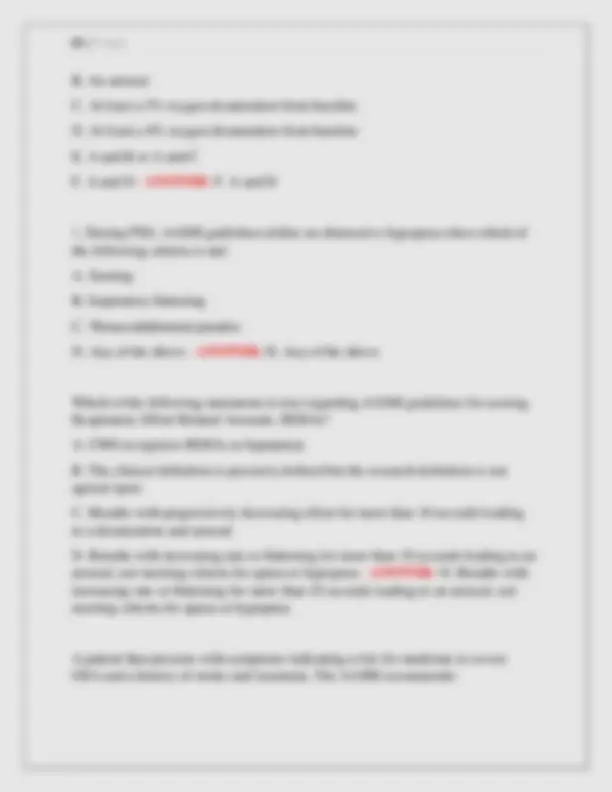
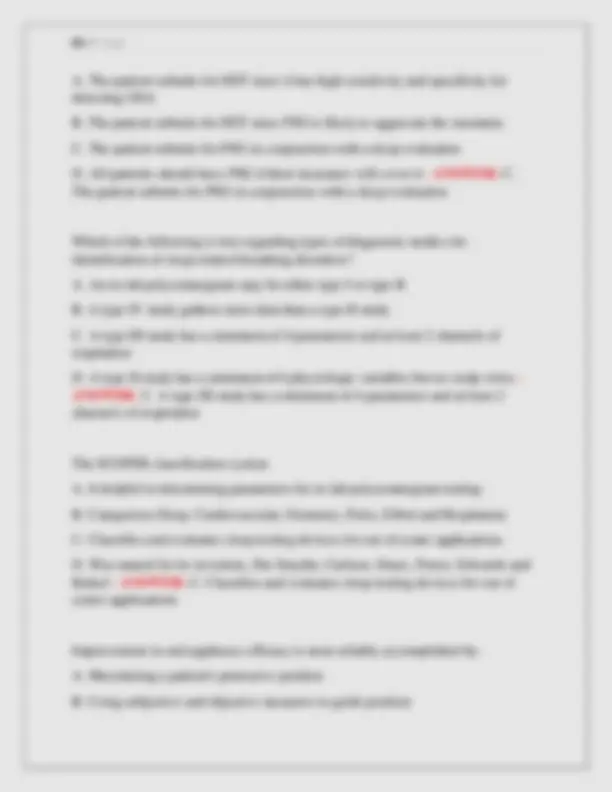
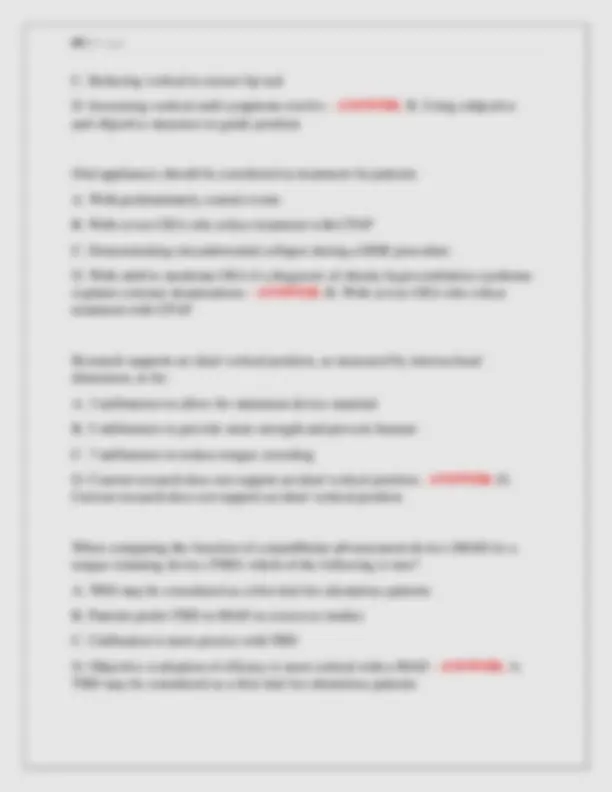
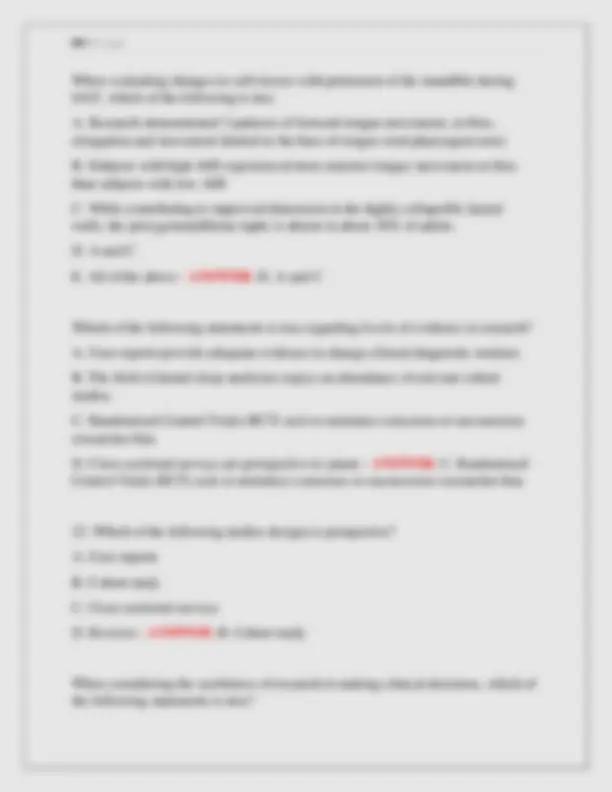
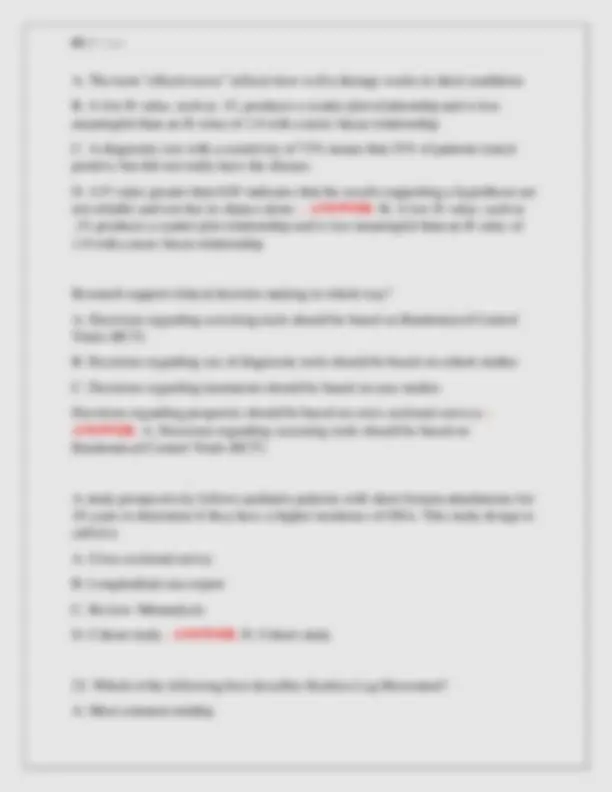
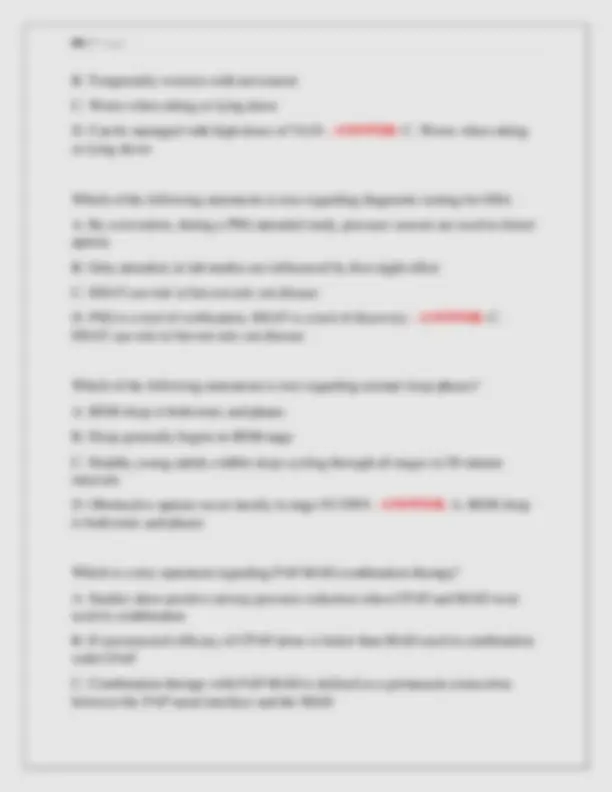
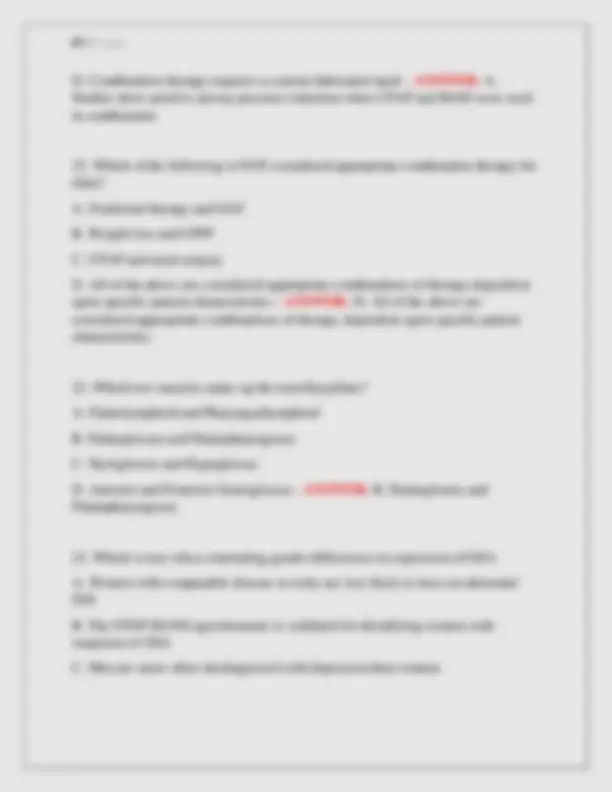
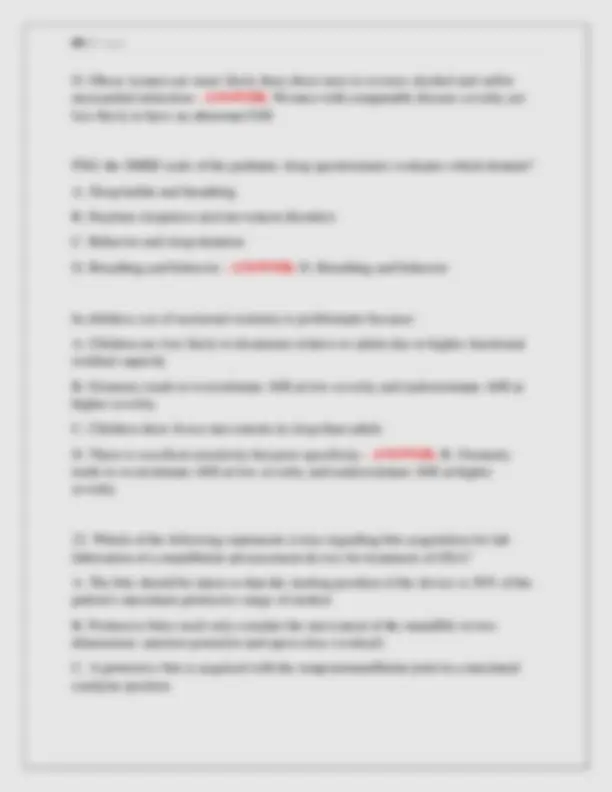
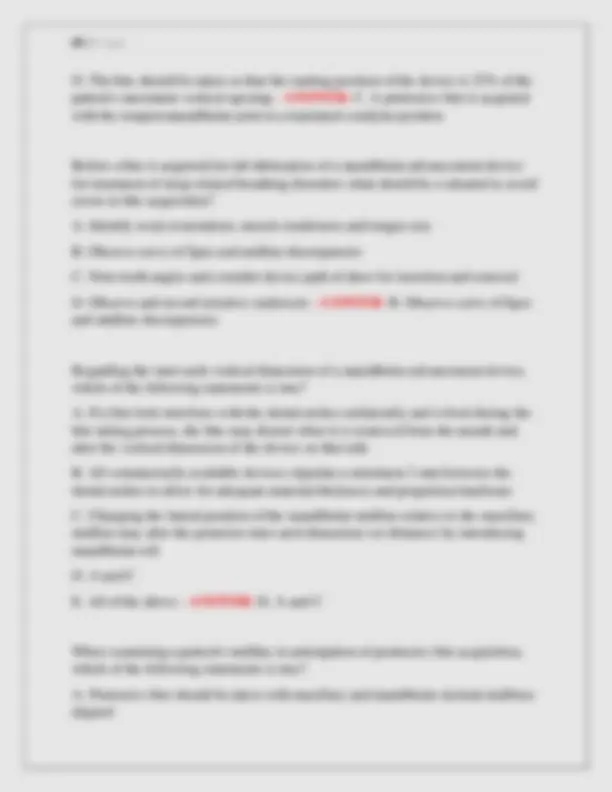
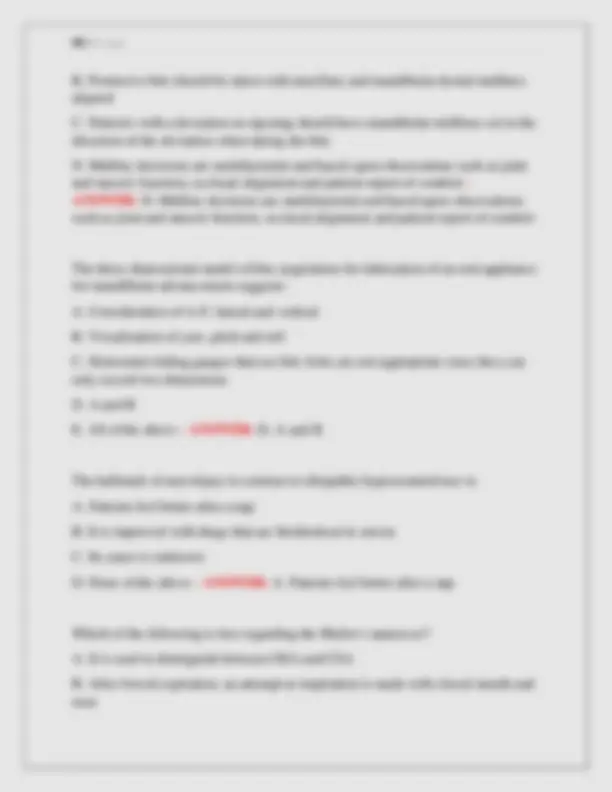
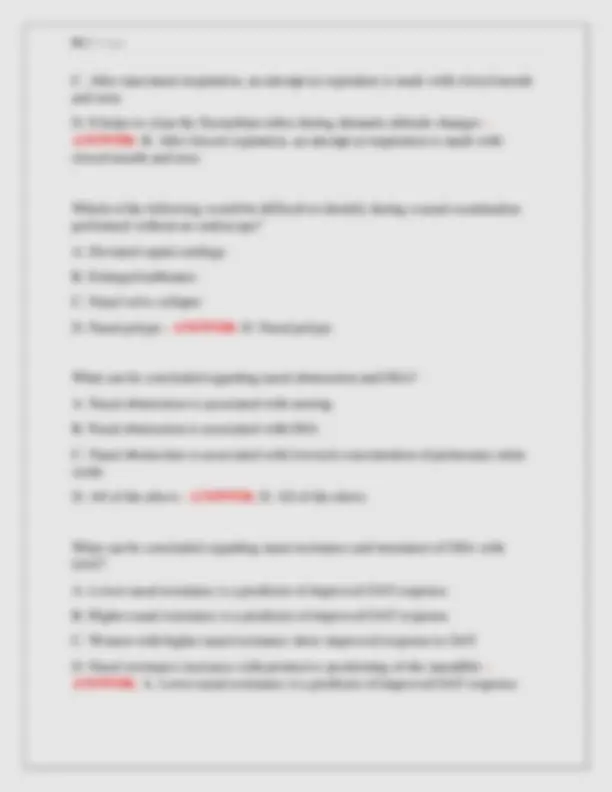
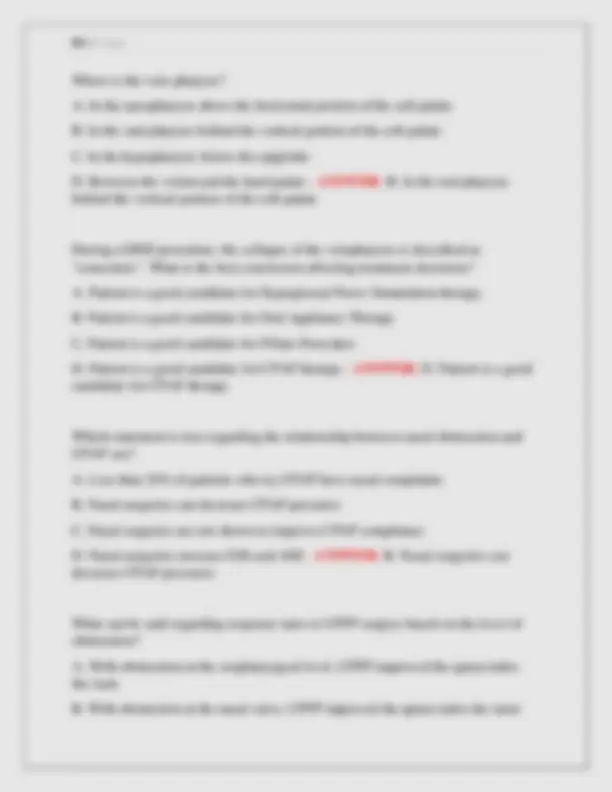
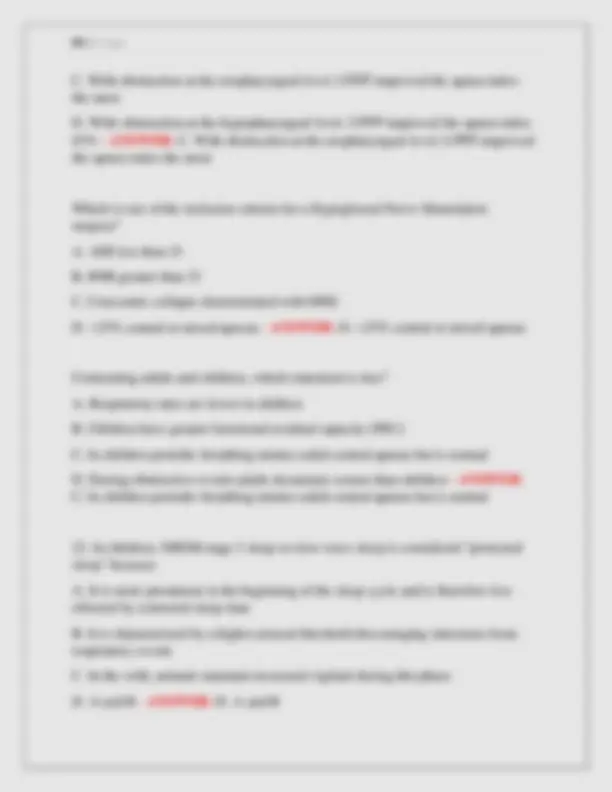

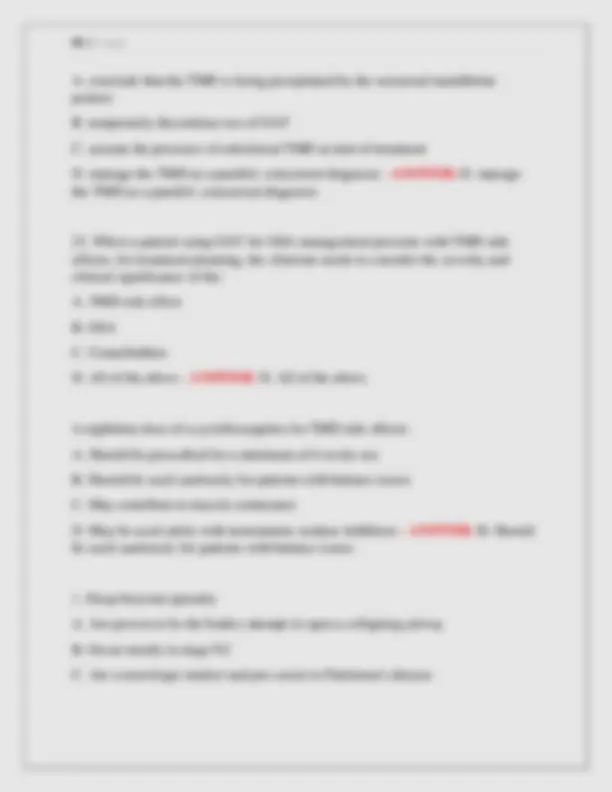
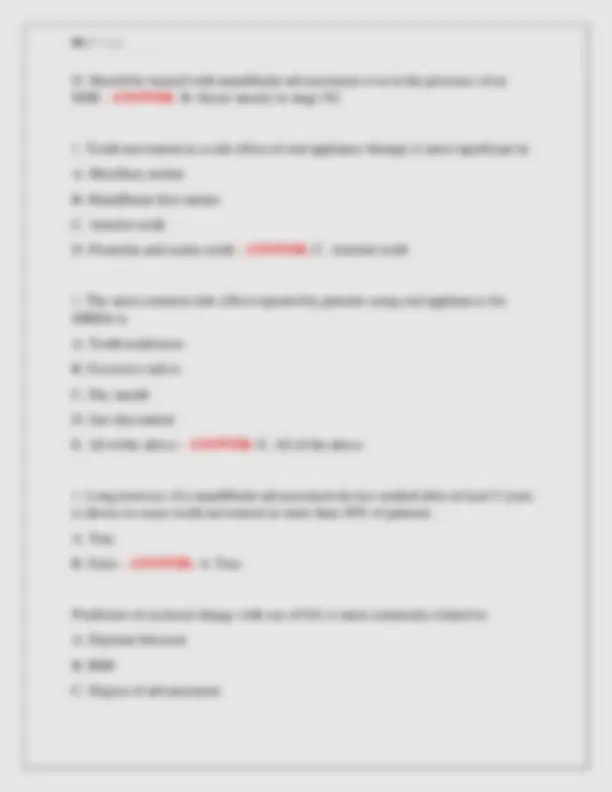
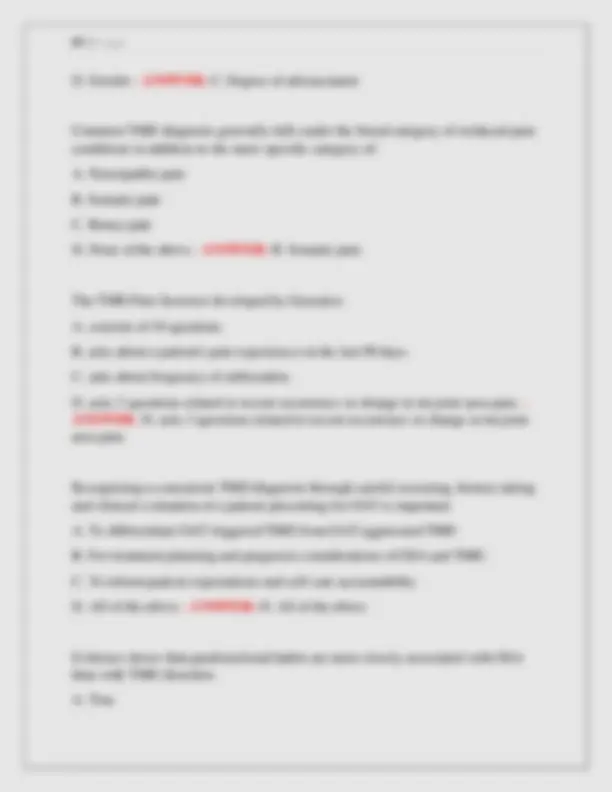





Study with the several resources on Docsity

Earn points by helping other students or get them with a premium plan


Prepare for your exams
Study with the several resources on Docsity

Earn points to download
Earn points by helping other students or get them with a premium plan
Community
Ask the community for help and clear up your study doubts
Discover the best universities in your country according to Docsity users
Free resources
Download our free guides on studying techniques, anxiety management strategies, and thesis advice from Docsity tutors
A 48 year old man is treated with OAT for his moderate OSA. On repeat sleep testing, his apnea-hypopnea index (AHI) has decreased to 3 events per hour, and he reports resolution of snoring and daytime sleepiness. What is the most reasonable dental-medical sleep medicine follow up regimen for this patient? A. As needed B. Every 6 months for the first year, then annually C. Monthly for the first 6 months, then every 6 months D. Every other year - ANSWER: B. Every 6 months for the first year, then annually Which of the following would exclude oral appliance therapy as a first treatment trial for OSA? A. Xerostomia B. Edentulism C. Micrognathia D. Steep mandibular plane angle - ANSWER: B. Edentulism Reviewing your patient's diagnostic polysomnogram, you note more than a 50% epoch consists of alpha waves. According to the current PSG scoring guidelines, the patient is in which stage of sleep?2 |
Typology: Exams
1 / 107

This page cannot be seen from the preview
Don't miss anything!





























































































A 48 year old man is treated with OAT for his moderate OSA. On repeat sleep testing, his apnea-hypopnea index (AHI) has decreased to 3 events per hour, and he reports resolution of snoring and daytime sleepiness. What is the most reasonable dental-medical sleep medicine follow up regimen for this patient? A. As needed B. Every 6 months for the first year, then annually C. Monthly for the first 6 months, then every 6 months D. Every other year - ANSWER: B. Every 6 months for the first year, then annually Which of the following would exclude oral appliance therapy as a first treatment trial for OSA? A. Xerostomia B. Edentulism C. Micrognathia D. Steep mandibular plane angle - ANSWER: B. Edentulism Reviewing your patient's diagnostic polysomnogram, you note more than a 50% epoch consists of alpha waves. According to the current PSG scoring guidelines, the patient is in which stage of sleep?
A. Stage I NREM B. Stage II NREM C. Stage III NREM D. Stage REM - ANSWER: A. Stage I NREM A patient presents for an evaluation to determine their candidacy for an oral appliance to treat their mild OSA. During your examination, you note the presence of TMD. This might include the following: A. Pain in the TMJ B. Pain in the muscles of mastication C. Anomalies in mandibular movement D. All of the above - ANSWER: D. All of the above The qualified dentist designation (QDD) came about in response to the 2015 practice guidelines paper recommending that physicians refer patients to dentists "qualified" to treat sleep related breathing disorders. This was based upon recognition of which of the following? A. Older dentists have more experience than younger dentists B. All dentists have the skills they need to deliver knowledgeable care C. Oral appliance efficacy data collected in studies is obtained by dentist with extensive clinical experience D. Training in dental schools on oral appliance therapy has become common place
- ANSWER: C. Oral appliance efficacy data collected in studies is obtained by dentist with extensive clinical experience
D. There is no correlation between collapsibility when awake and collapsibility when asleep - ANSWER: C. Sleep apnea patients demonstrate a more positive Pcrit Tagged MRI recently showed 3 patterns of tissue formation during mandibular advancement. Which of these was NOT observed? A. The whole tongue moved forward "en bloc" B. Only the superior posterior portion of the tongue moved forward C. The posterior tongue did not move, but the whole tongue elongated D. Only the inferior posterior portion of the tongue moved forward - ANSWER: B. Only the superior posterior portion of the tongue moved forward In Van Heasendonck's 2015 systematic review of oral appliance health benefits, mean disease alleviation was calculated using the following: A. An embedded microsensor B. A highly compliant patient population C. Patient's diaries of hours of nightly device use D. Patient's attestations to hours of nightly device use - ANSWER: A. An embedded microsensor Caffeine promotes wakefulness by suppressing or blocking: A. Thyroid stimulating hormone B. Growth hormone C. Orexin
D. Adenosine - ANSWER: D. Adenosine A study design where one or more population samples are followed prospectively to determine which participant's exposure characteristics (risk factors) are associated with a disease or outcome is called a: A. Randomized control trial B. Non-randomized control trial C. Cohort study D. Case control study - ANSWER: C. Cohort study In an experiment where participants are randomly assigned, one group receives the drug or procedure, a placebo group's treatment is disguised to resemble the drug or procedure being investigated and a control group receives nothing. Members of each group are prevented from knowing whether they are receiving active therapy. This would be called a: A. Randomized control trial B. Cohort study C. Randomized case report D. Blinded triple trial - ANSWER: A. Randomized control trial The masseter muscle originates at: A. The temporal fossa B. The zygomatic arch C. The mylohyoid ridge
B. An oral appliance is contraindicated for a patient that has active TMD C. A comprehensive oral-facial evaluation is necessary to ID the source of their jaw pain before considering or proceeding with oral appliance therapy D. An oral appliance will improve their jaw pain if the source of the pain is muscular, and not originating from the TMJ - ANSWER: C. A comprehensive oral-facial evaluation is necessary to ID the source of their jaw pain before considering or proceeding with oral appliance therapy The most recent research points to the primary etiology of sleep bruxism as: A. Nicotine, ethanol, recreational drug or caffeine use B. Peripheral triggers such as occlusal discrepancies C. Central factors such as stress and psychosocial influences D. The result of a combination of environmental, biological, and psycho-social influences - ANSWER: D. The result of a combination of environmental, biological, and psycho-social influences According to Caples, et al, risk of fatal and non-fatal cardiovascular events is significantly increased in patients with: A. Mild OSA B. Severe OSA C. Severe OSA on CPAP therapy D. Both A and B - ANSWER: B. Severe OSA In sleep, heart rate... - ANSWER: Slows 10 - 15 BPM In sleep, breathing... - ANSWER: slows
In sleep, muscles - ANSWER: relax In sleep, BP - ANSWER: Decreases (morning dip) In sleep, body temperature... - ANSWER: Decreases, then begins to rise just before morning wakeup time Which neurons are sleep promoting? - ANSWER: - Ventrolateral Preoptic System (VLPO)
What % REM do full term neonates have? - ANSWER: 50% What % REM do adults 20 - 69 have? - ANSWER: 25% How much sleep does N1 encompass? - ANSWER: 5 - 10% Very light sleep How much sleep does N2/N3 encompass? - ANSWER: 65 - 70% What phase of sleep are sleep spindles present in? - ANSWER: Mostly N Very small amount present in N Where do sleep spindles originate? - ANSWER: Thalamus Where do sleep spindles propogate? - ANSWER: Cortex What are sleep spindles associated with? - ANSWER: Offline memory processes **Get increased spindle activity after learning What waves are associated with N1 sleep? - ANSWER: Vertex sharp waves - alpha waves
What sleep study architecture is associated with N2 sleep? - ANSWER: - K complexes
How does O2 relate to ventilation drive? - ANSWER: Minimum O2 ventilation drive until PO2 <60, then get enhanced ventilation How does CO2 relate to ventilation drive? - ANSWER: Linear relationship - minute ventilation increases as CO2 increases What is the definition of apnea? - ANSWER: Cessation of airflow for 10 seconds or longer What is the definition of hypopnea? - ANSWER: Decrease in airflow lasting for 10+ seconds 30% reduction of airflow AND At least a 3% oxygen desaturation OR an arousal (CMS says 4%) Shallow breathing Decreased minute ventilation Why do humans have sleep apnea and others do not? - ANSWER: Longer, more collapsible airway. No overlap of epiglottis and soft palate Allows advanced speech but unprotected airway during sleep
What is the measure of airway patency? - ANSWER: Pcrit Determined by sum of structural and neuromuscular determinants of airway collapsibility What does more negative Pcrit mean? - ANSWER: Airway is open Pcrit<- 10 in normal subjects What are the 2 fundamental sleep induced changes in OSA? - ANSWER: - Changes in passive mechanics of upper airway
What does a CPAP do? - ANSWER: - Splints airway open